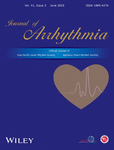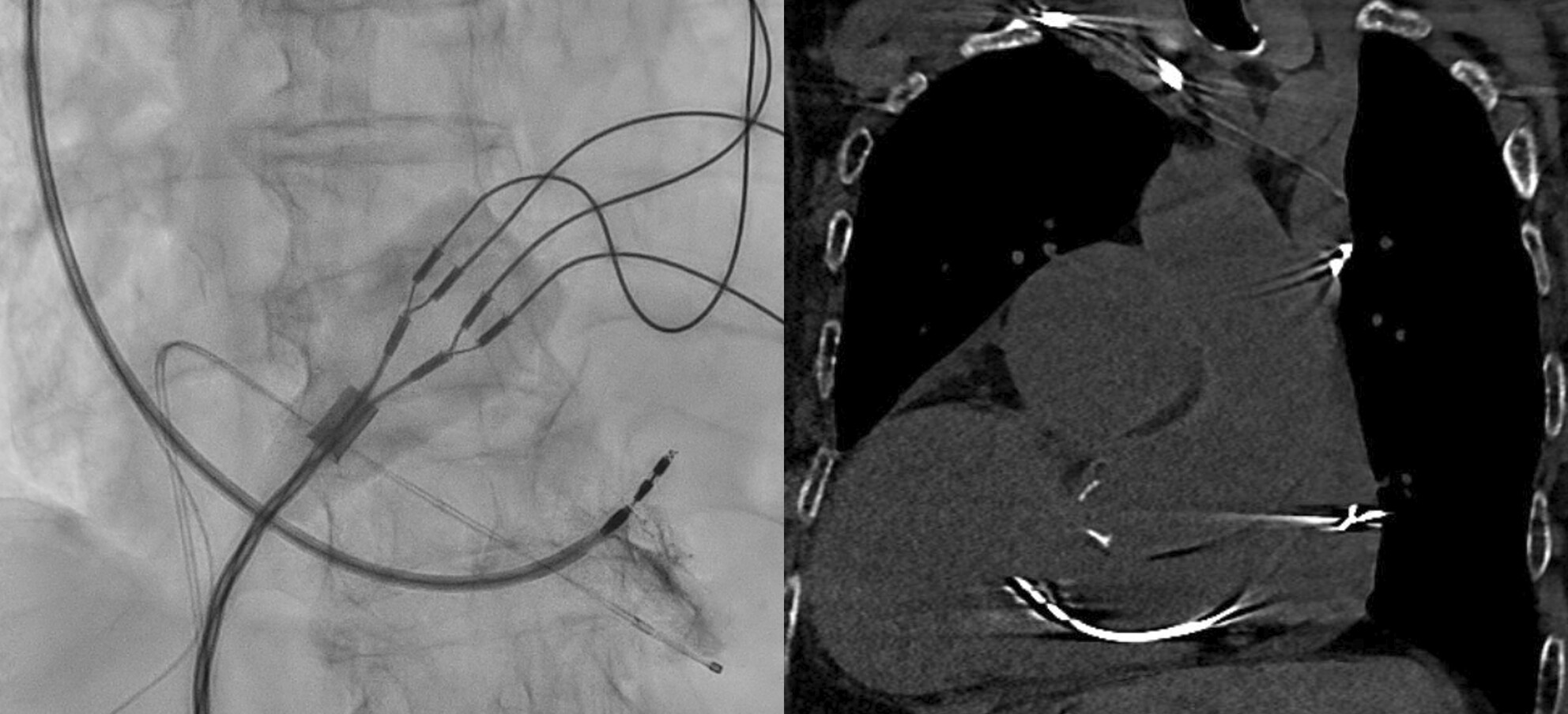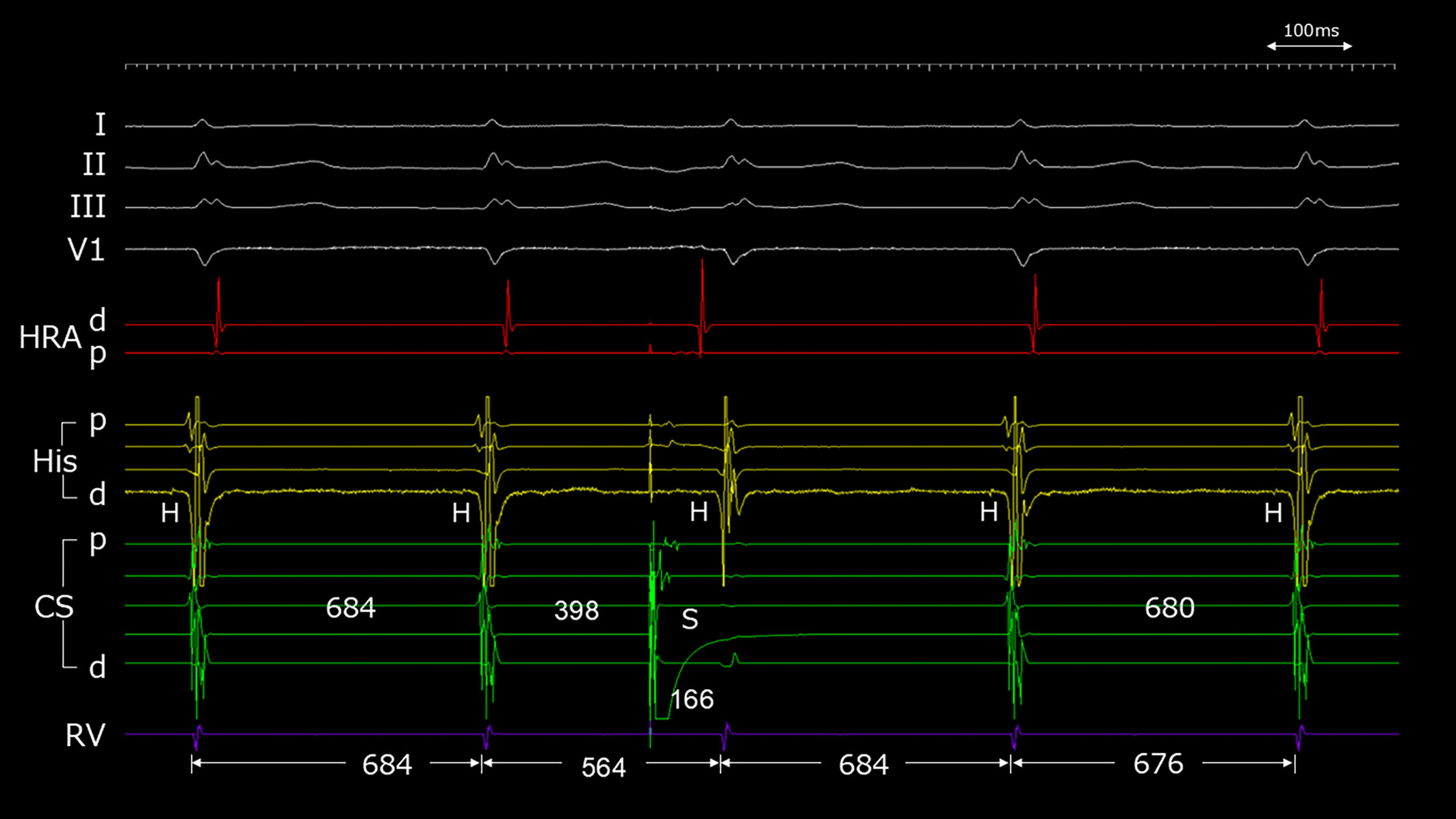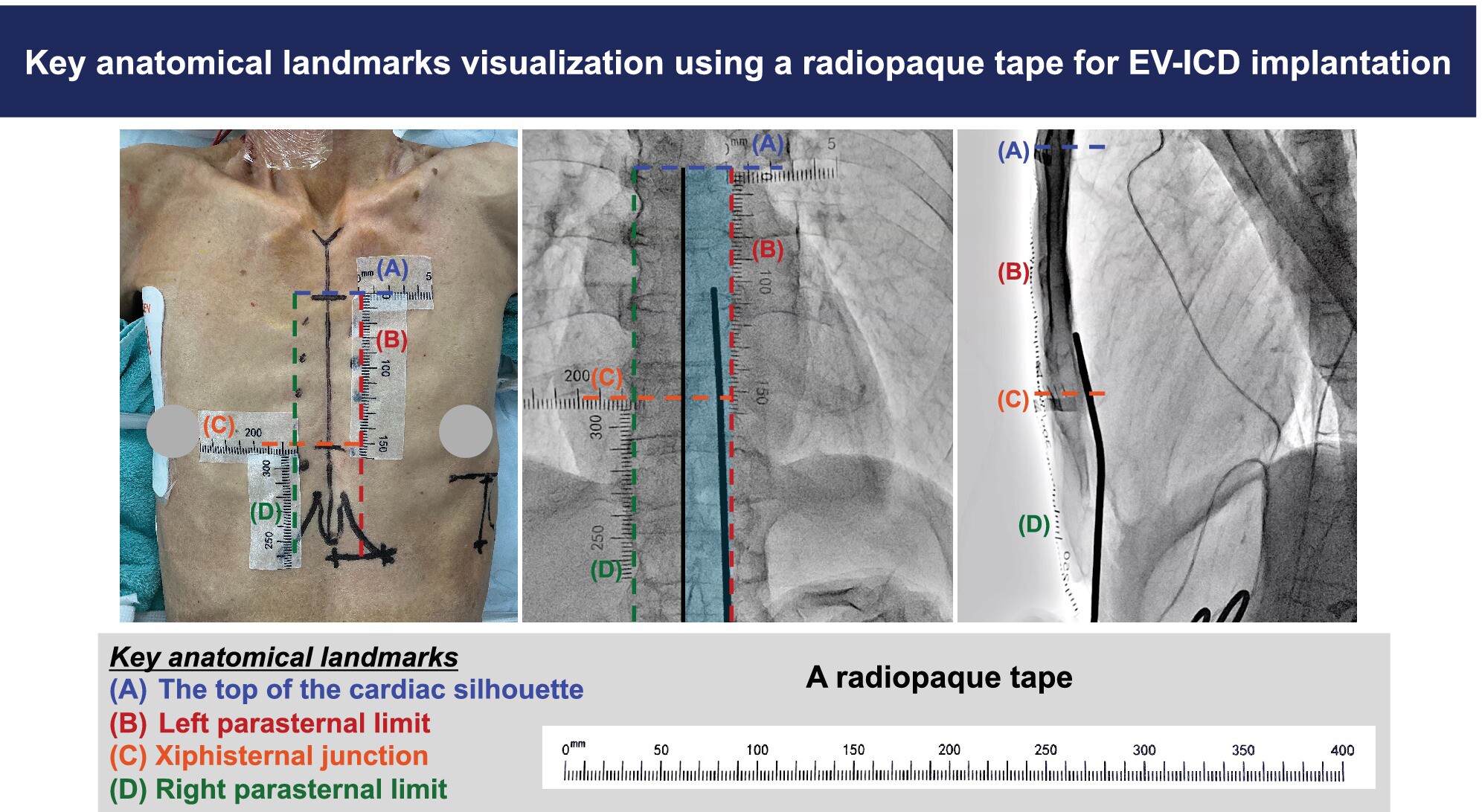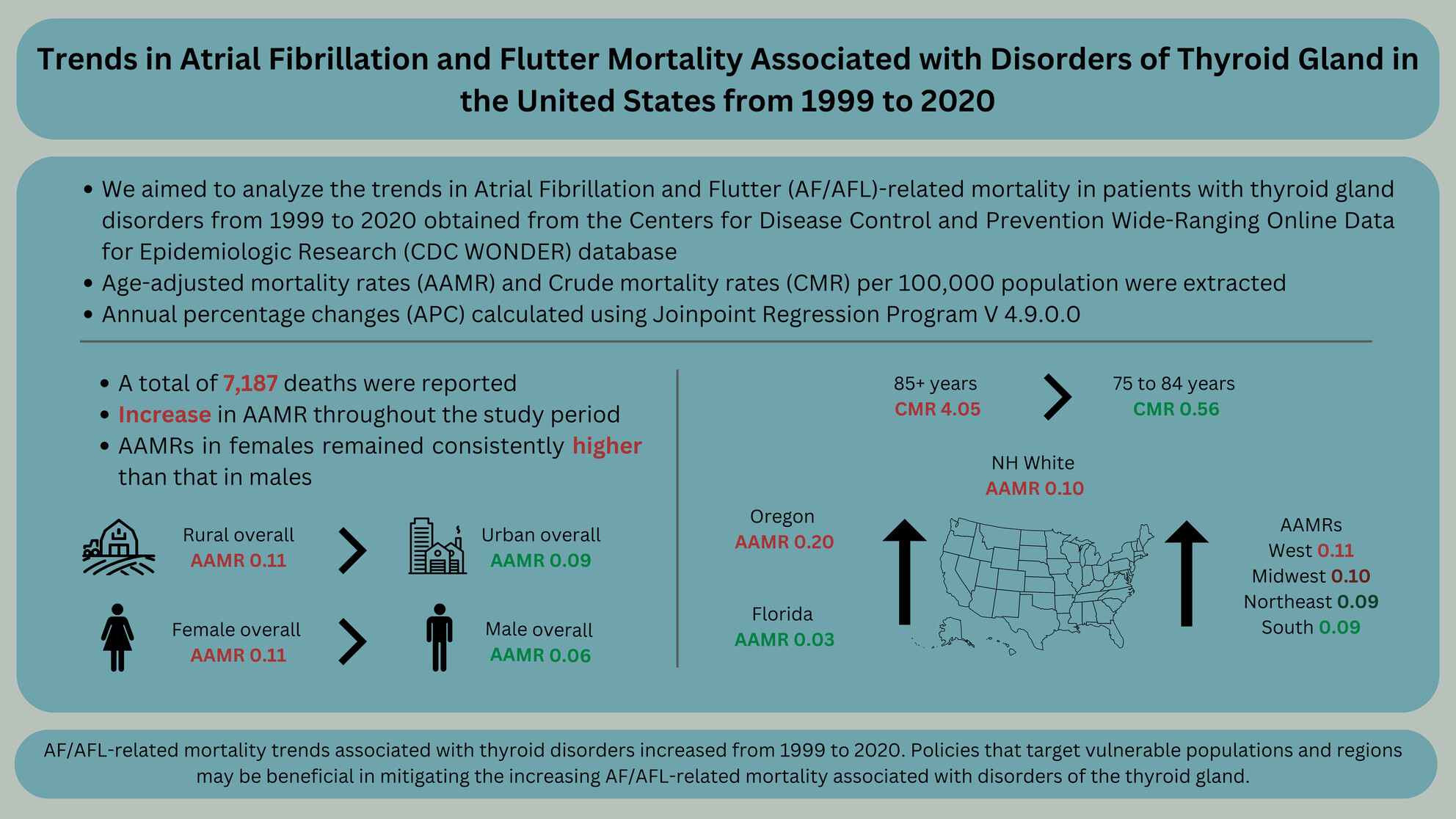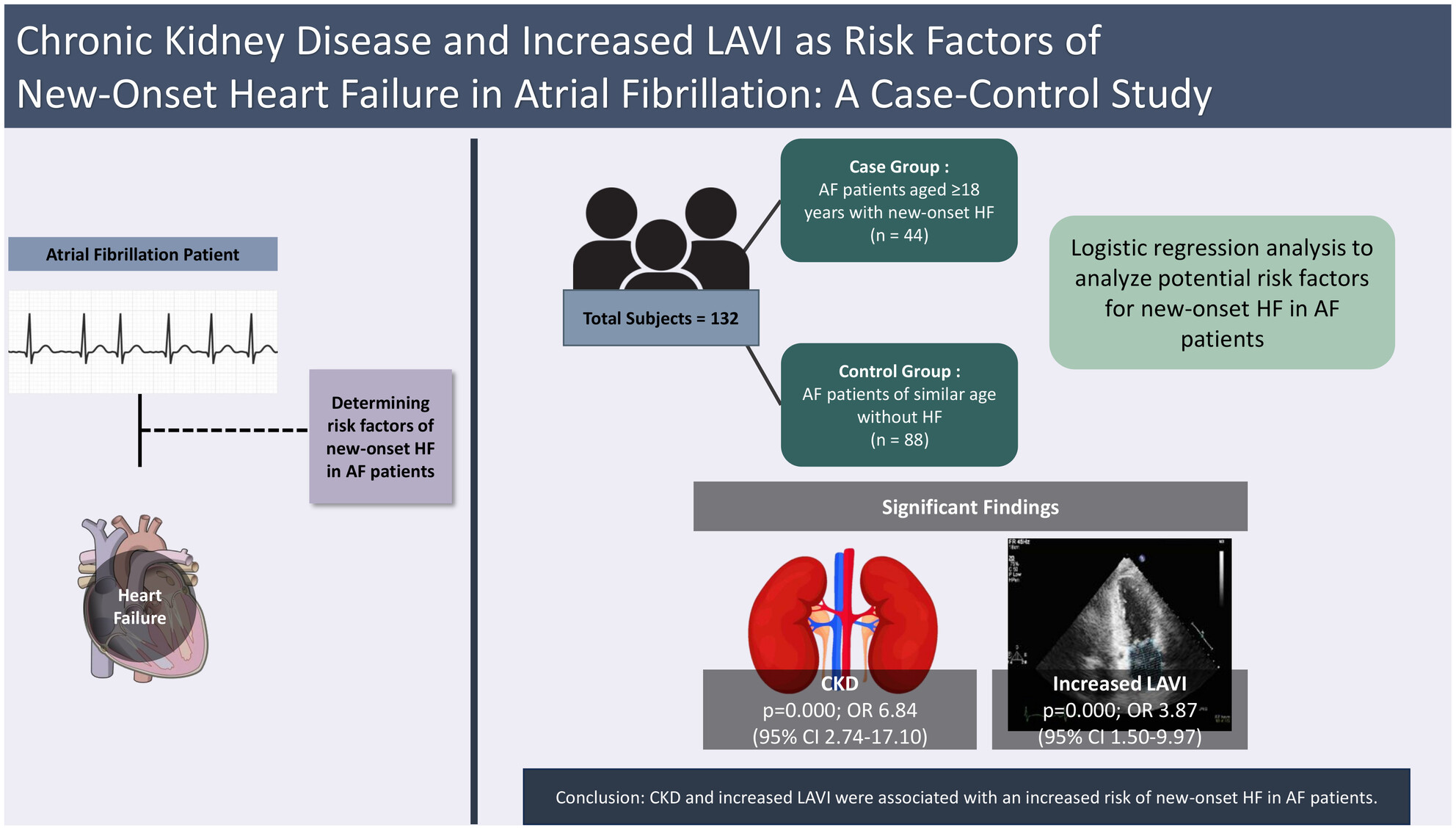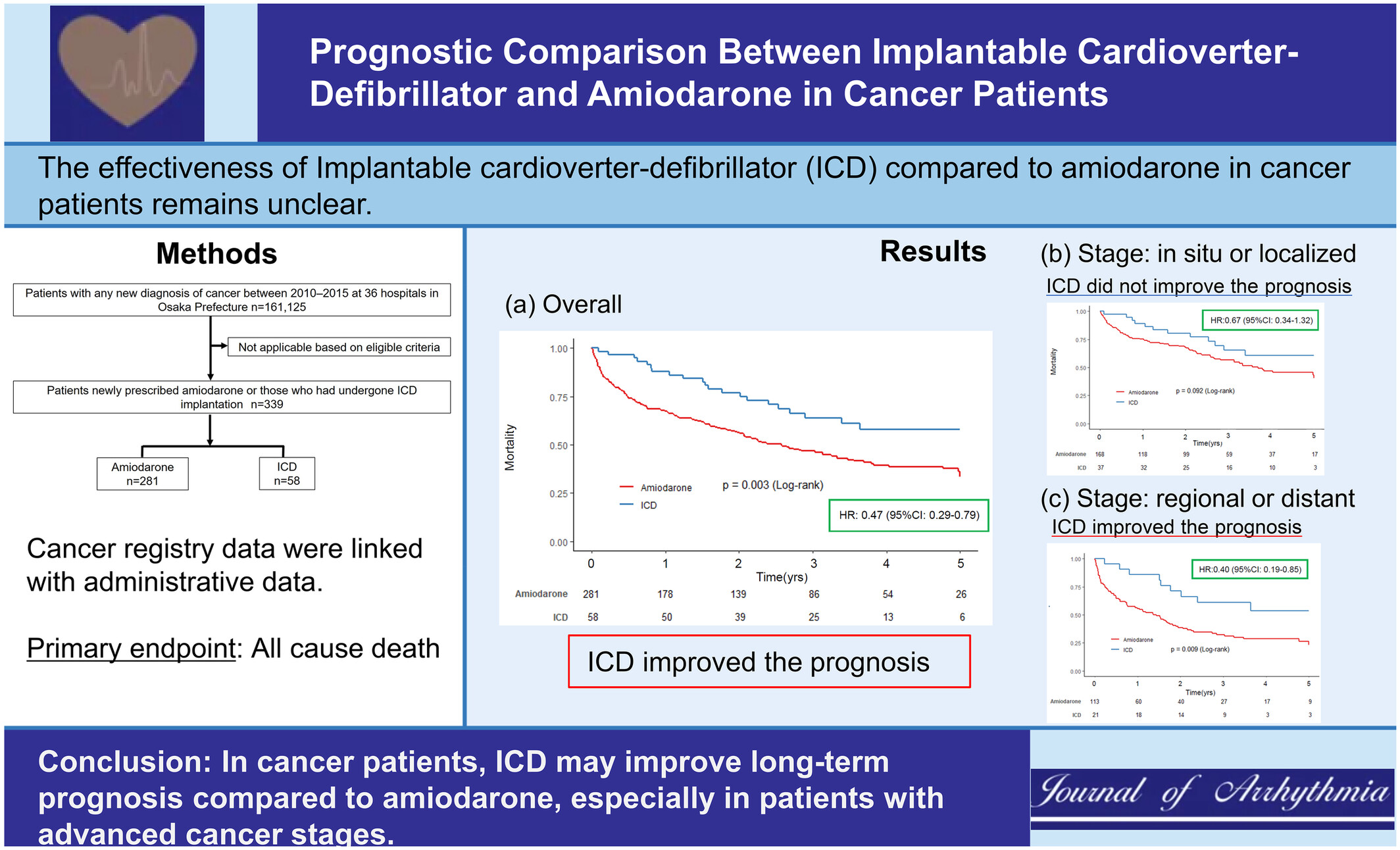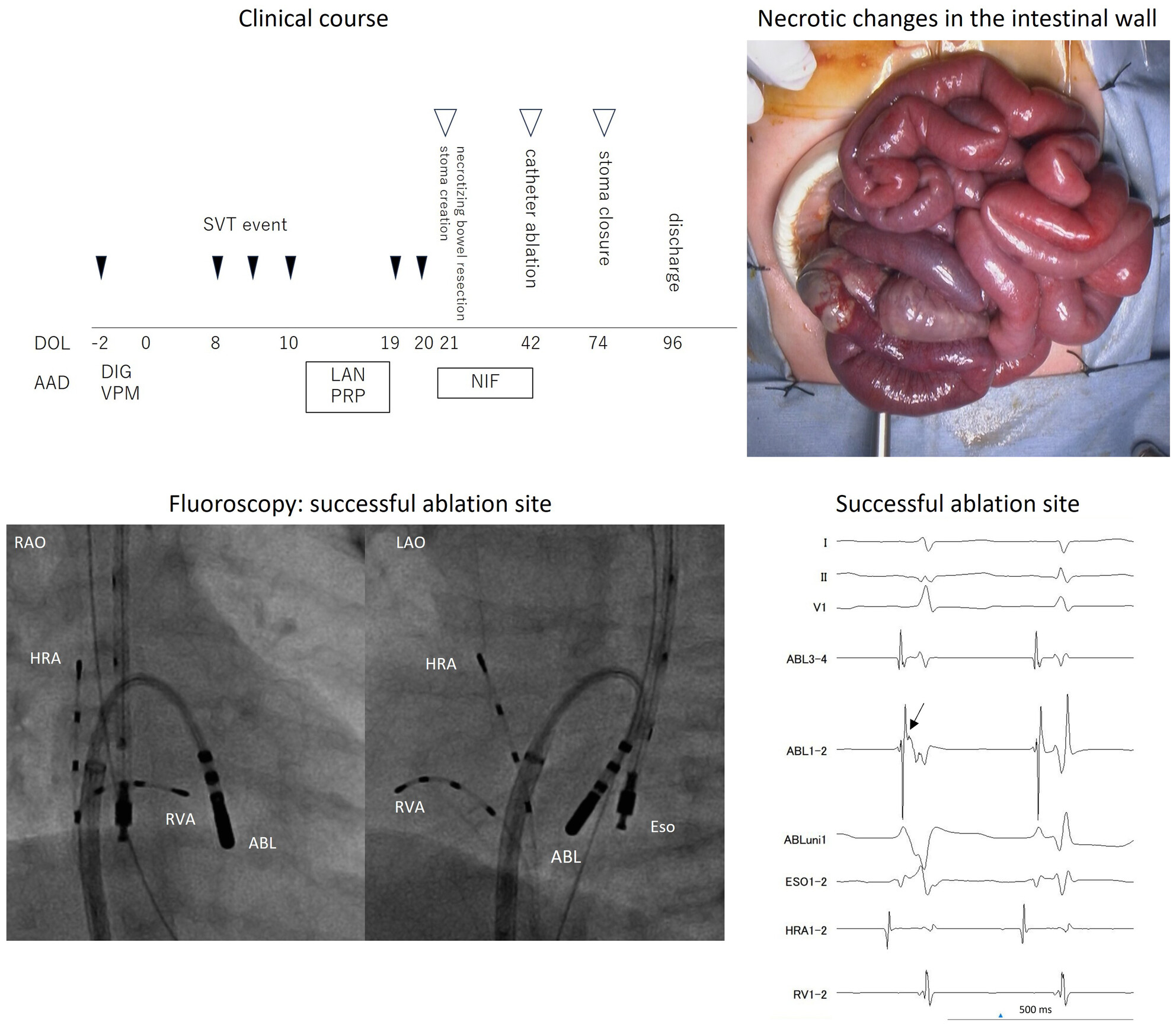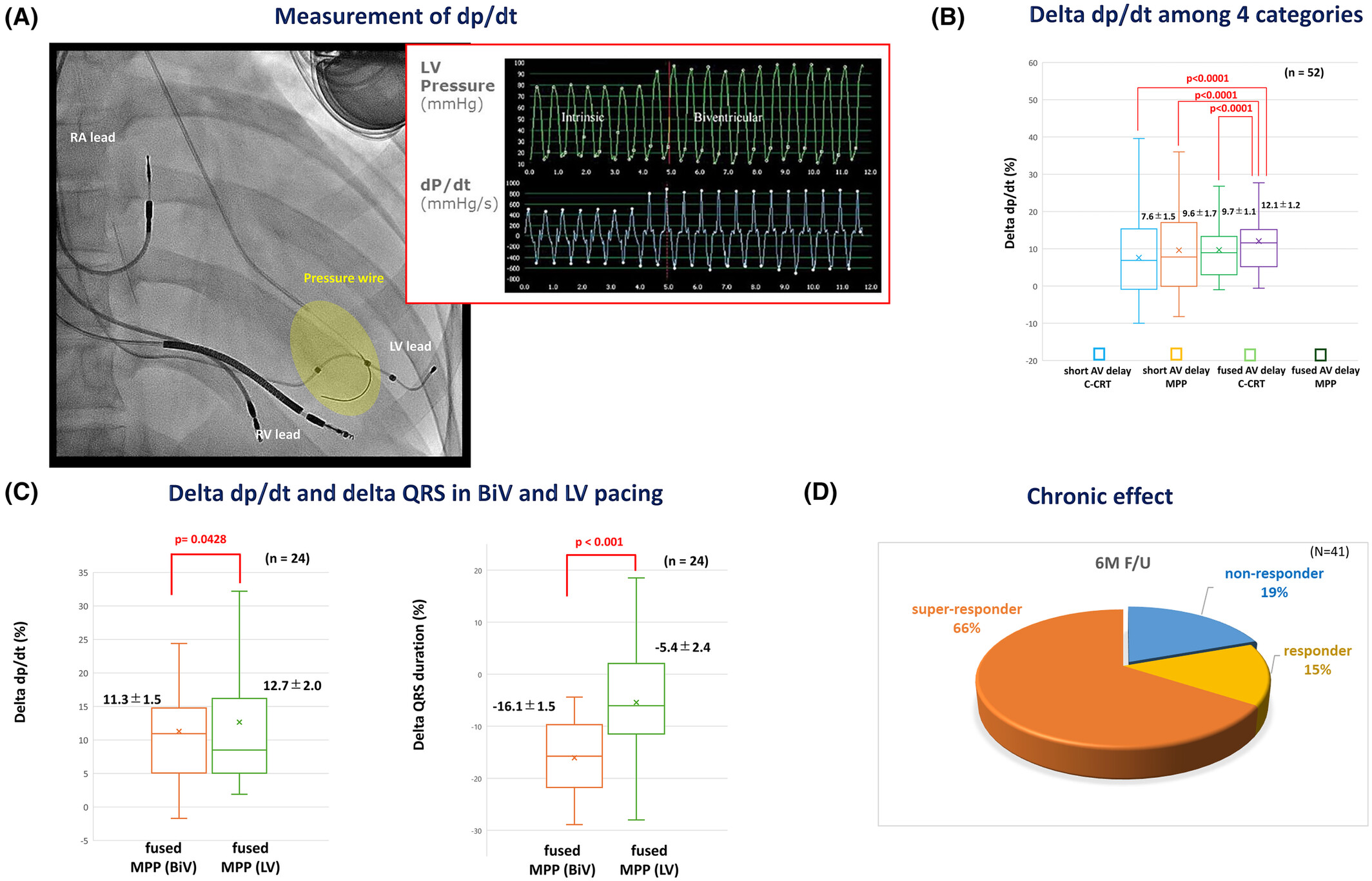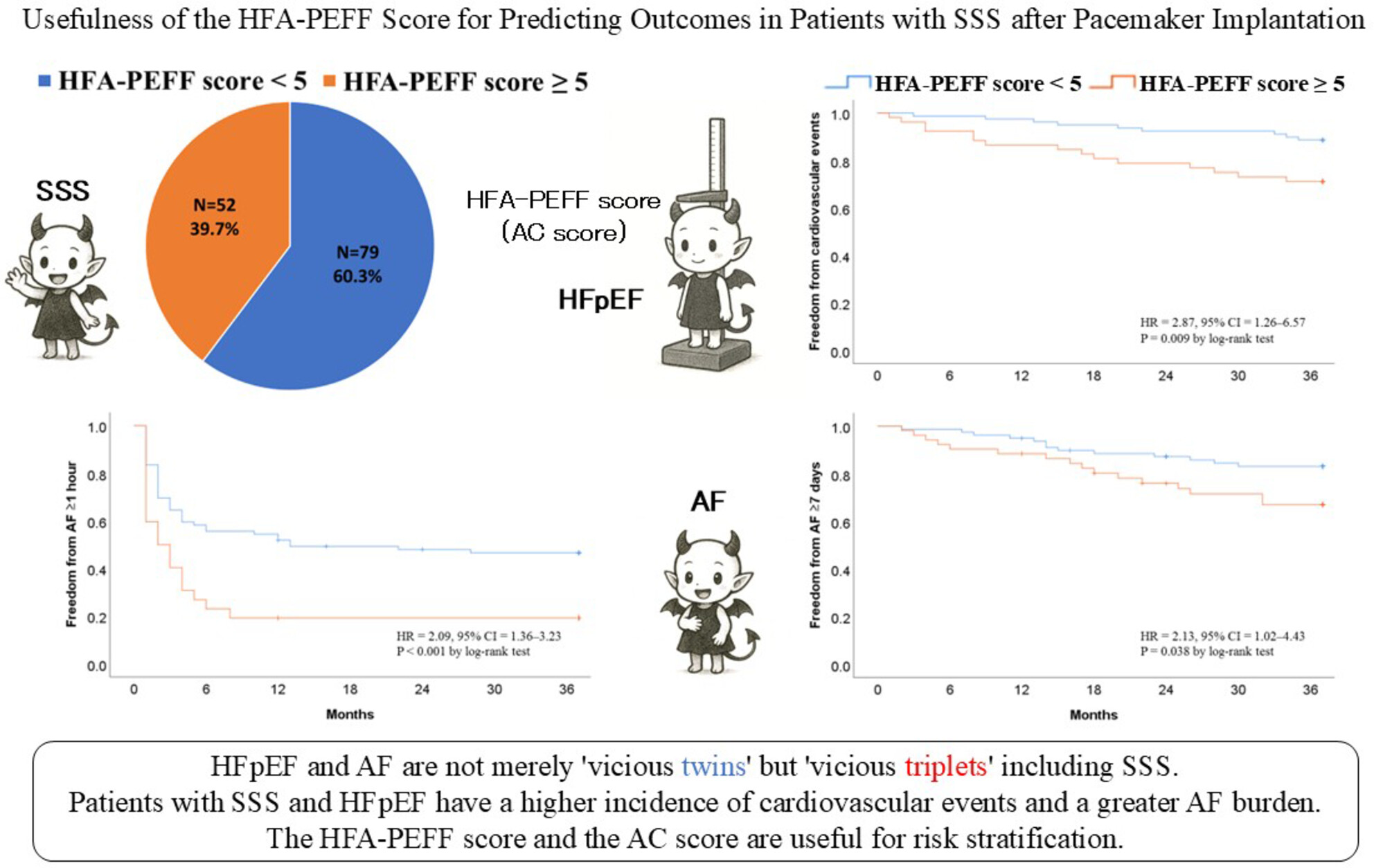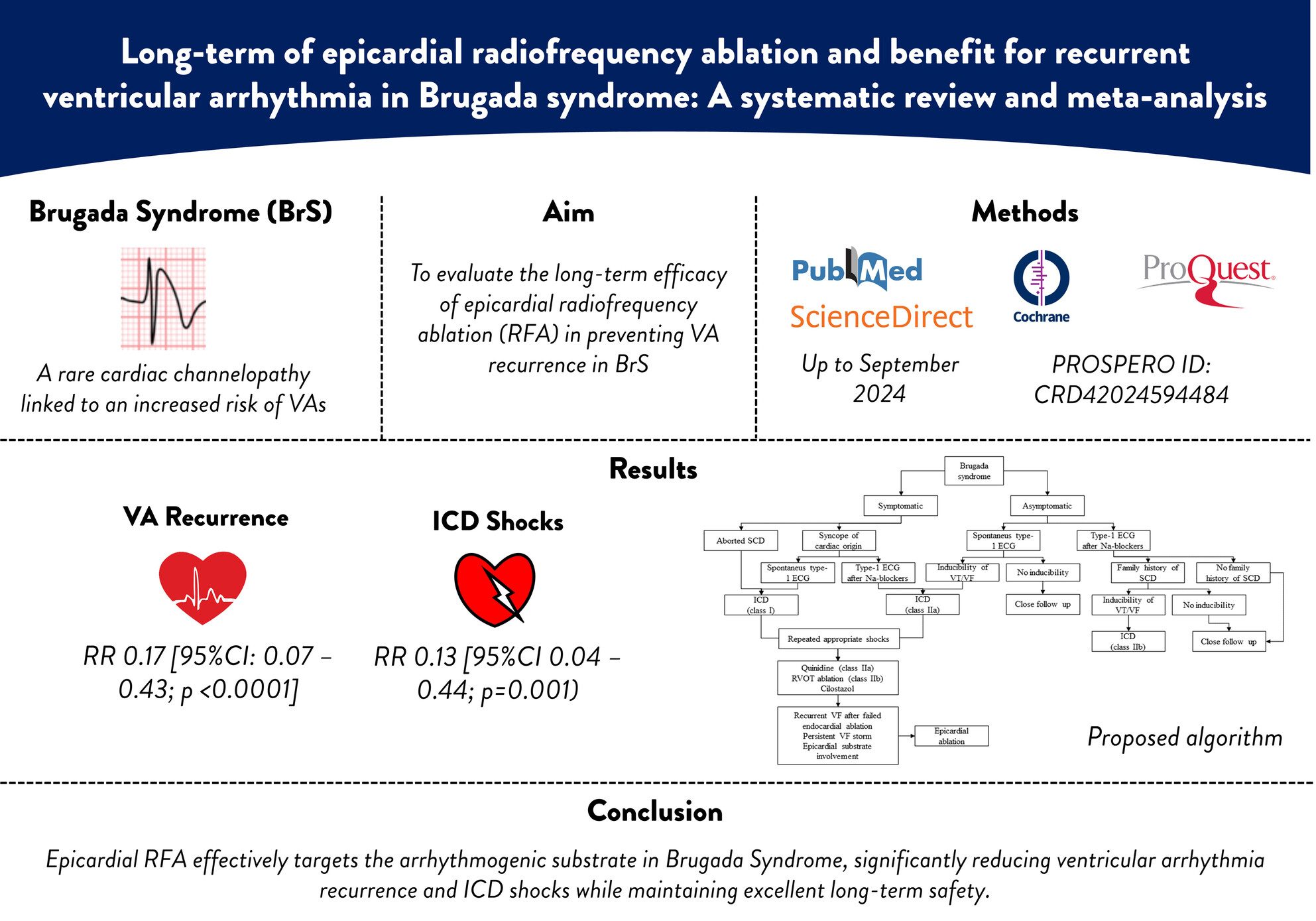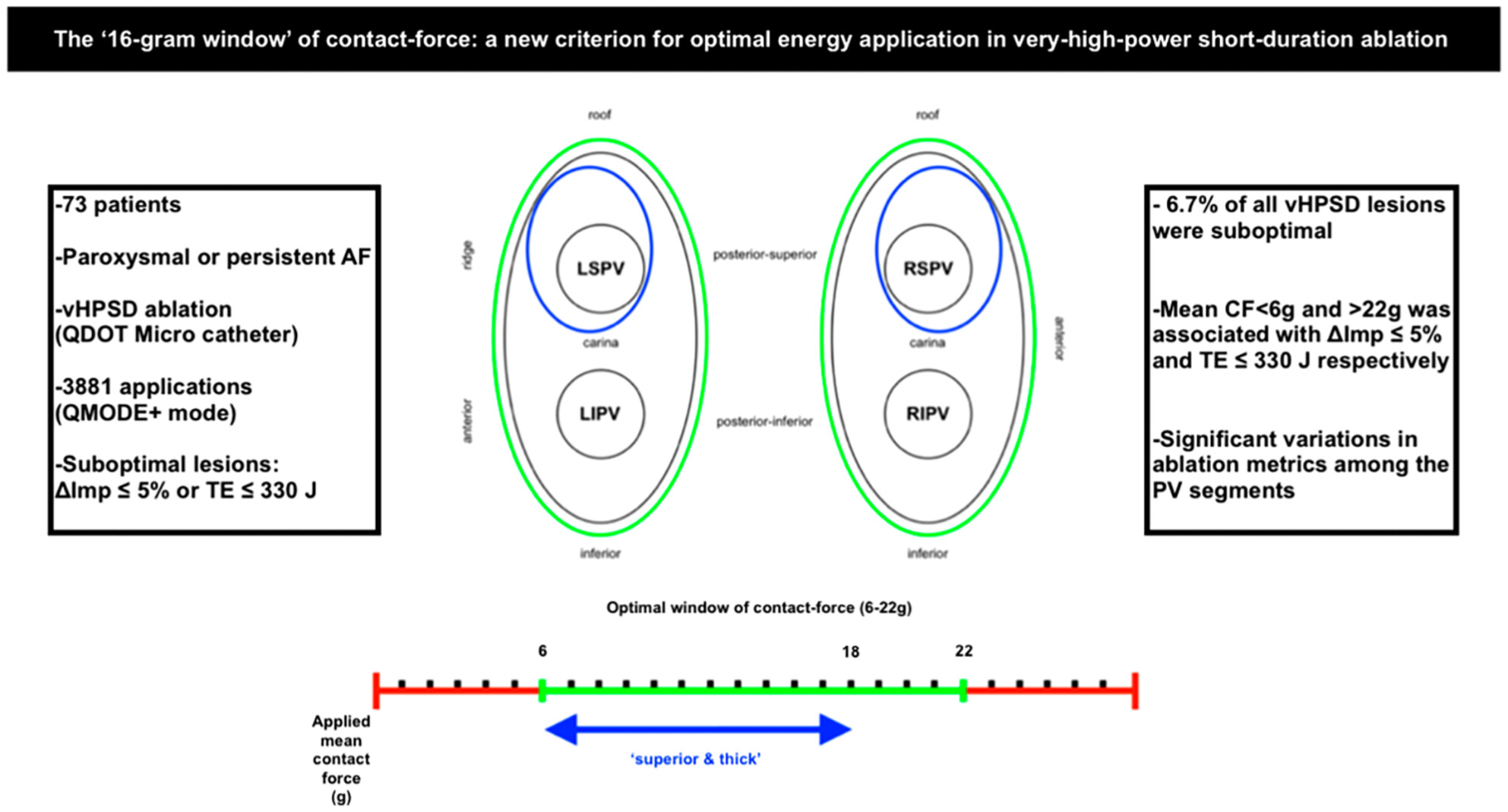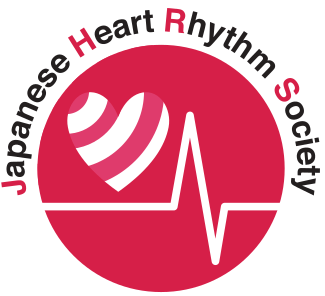Journal list menu
Export Citations
Download PDFs
SPOTLIGHT
A case with congenital absence of the left atrial appendage
- First Published: 23 June 2025
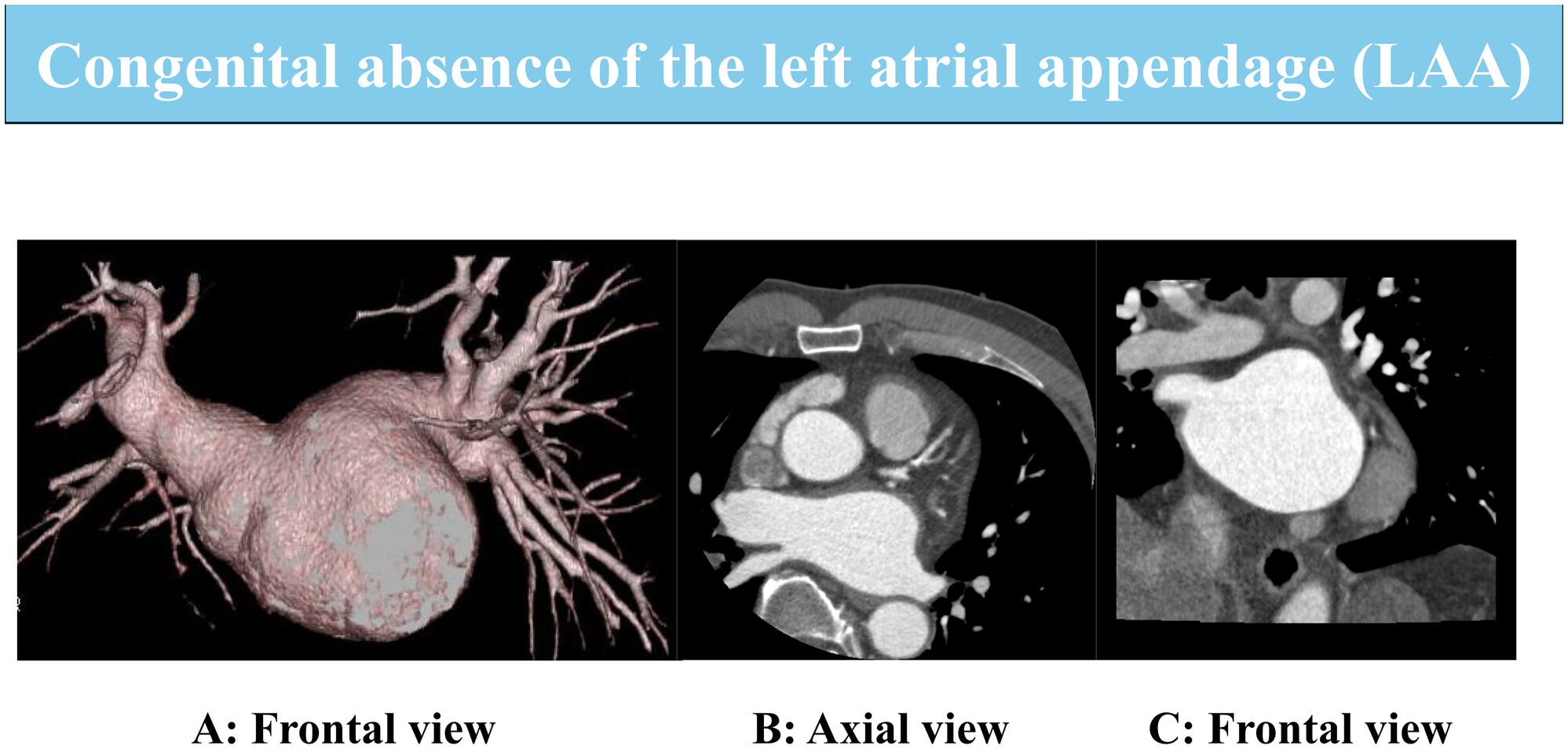
Congenital absence of the left atrial appendage (LAA) is an extremely rare anatomical variation with important implications for the management of atrial fibrillation (AF). Additionally, atrial natriuretic peptide (ANP) production may be compensated by the right atrial appendage (RAA) in cases of congenital LAA deficiency.
ORIGINAL ARTICLE
Pulmonary vein isolation does not alter cardiovascular afferent autonomic reflexes in atrial fibrillation
- First Published: 23 June 2025
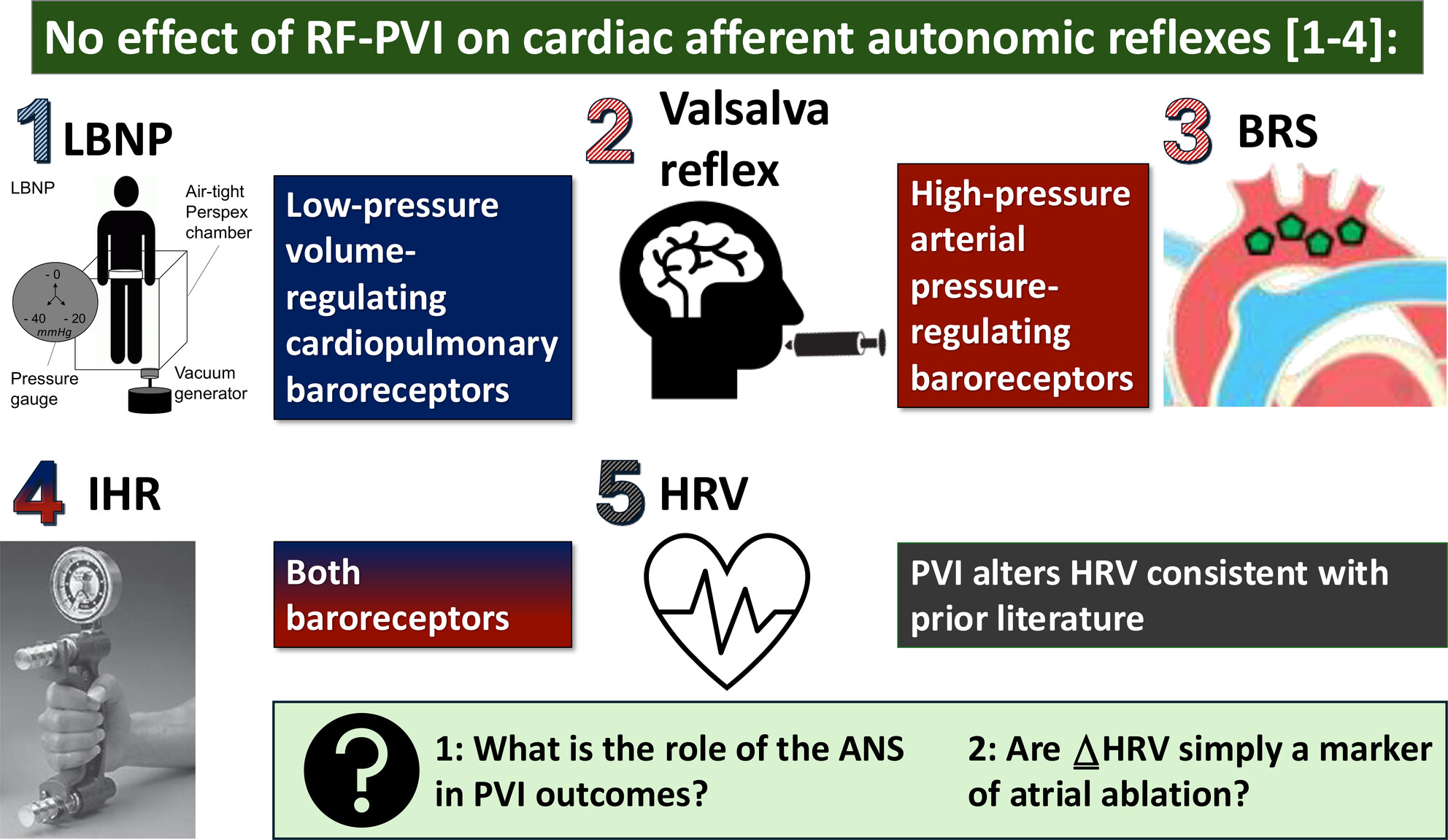
Successful (radiofrequency) PVI has no effect on cardiovascular afferent autonomic reflex integrity, despite alterations in heart rate variability (HRV). Therefore, are observations of HRV alterations being predictive of PVI outcomes simply a marker of adequate ablation or does the autonomic nervous system directly influence PVI outcomes?
LETTER TO THE EDITOR
Challenges in warfarin versus DOACs for elderly atrial fibrillation: A critique of Takagi and Ueda's study
- First Published: 23 June 2025
SPOTLIGHT
Successful pacemaker implantation using left bundle branch area pacing in a patient with dextrocardia: A case report
- First Published: 19 June 2025
EDITORIAL
GUIDELINES
JCS/JHRS 2024 Guideline Focused Update on Management of Cardiac Arrhythmias
- First Published: 16 June 2025
EDITORIAL
An emerging role of inflammatory biomarker (suPAR) for prognostic evaluation of atrial fibrillation
- First Published: 16 June 2025
SPOTLIGHT
Surgical cryoprobe ablation for premature ventricular contraction of left ventricular summit refractory to catheter ablation
- First Published: 16 June 2025
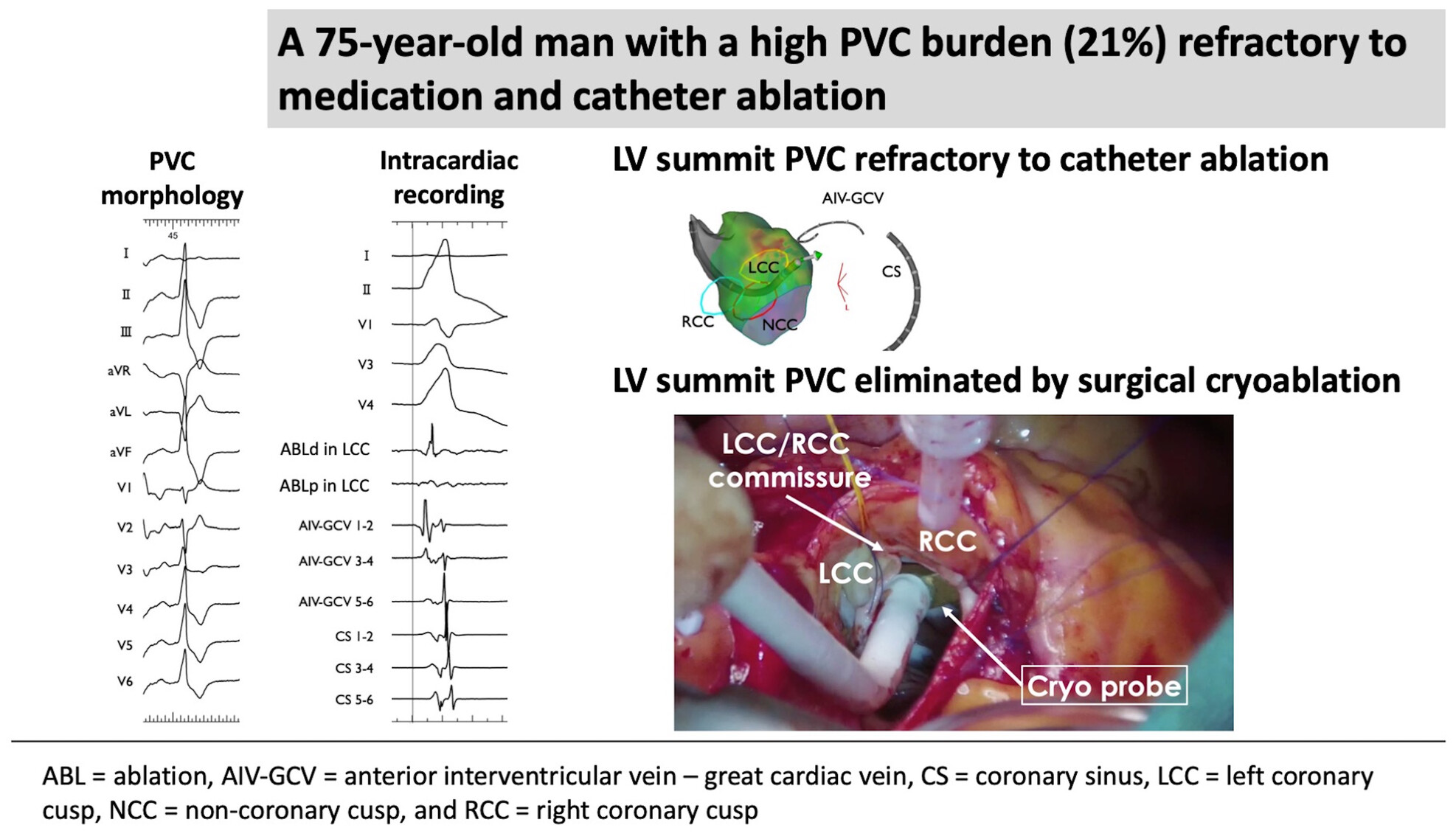
The successful elimination of left ventricular (LV) summit premature ventricular contractions (PVCs) using surgical endocardial cryoablation. Guided by preoperative activation mapping, cryoablation was performed during aortic valve replacement without epicardial access. This approach effectively resolved PVCs refractory to catheter ablation.
Slow–fast atrioventricular nodal reentrant tachycardia mimicking junctional tachycardia following atrial extrastimulation
- First Published: 16 June 2025
Bi-peaked R wave in HRV: A technical pitfall or ventricular pathology
- First Published: 13 June 2025
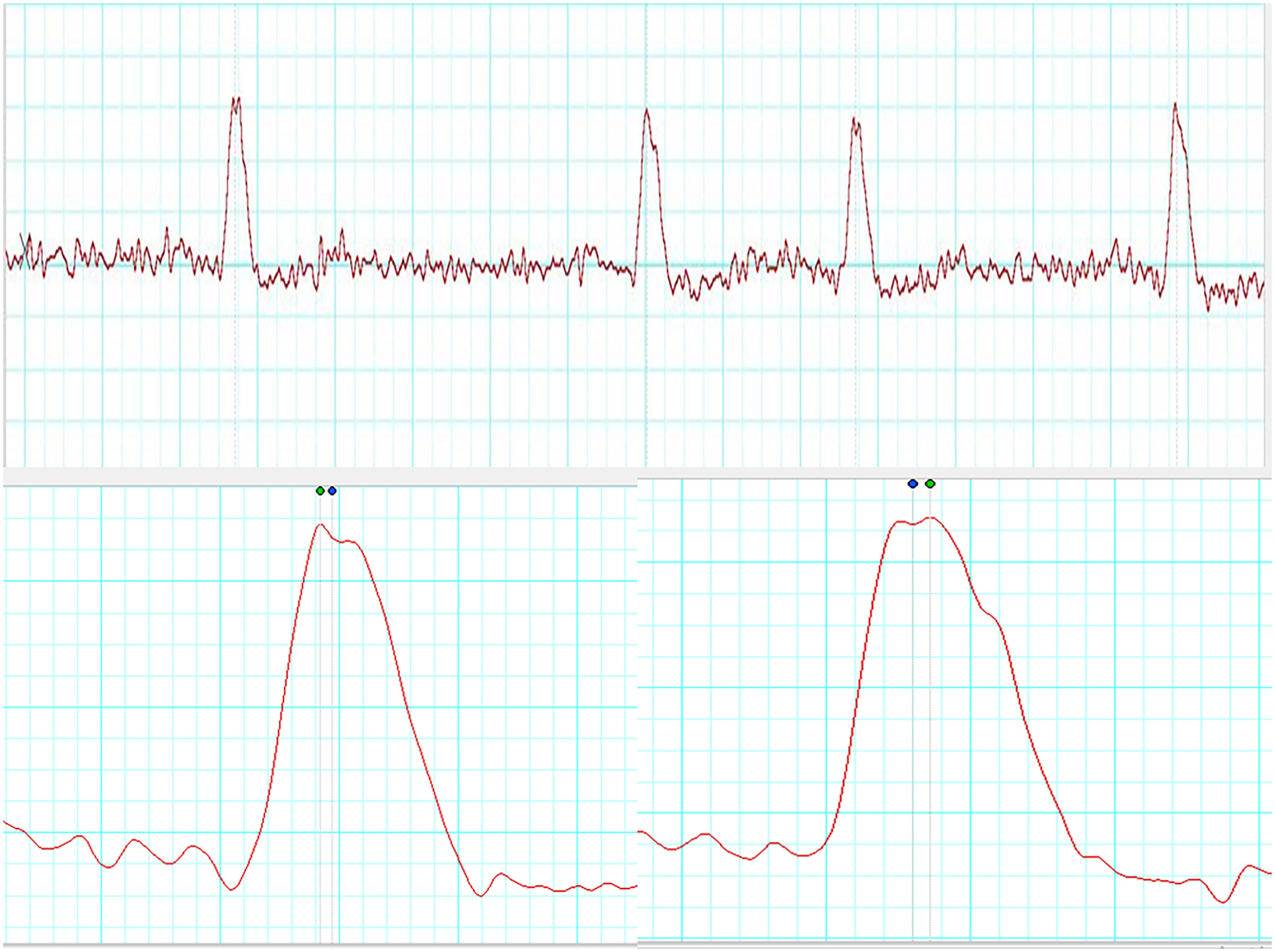
During routine heart rate variability recording in an elderly male, bi-peaked R waves were recorded consistently. Initially, it was thought to be because of technical issues, which were ruled out systematically; next, it was believed to have been caused by cardiac pathology, which was evaluated using ECG and echocardiography.
Utility of key anatomical landmarks visualization using a radiopaque tape for successful extravascular implantable cardioverter defibrillator implantation
- First Published: 13 June 2025
ORIGINAL ARTICLE
Quantitative analyses of the distal bipolar electrogram for focal premature ventricular contraction ablation
- First Published: 11 June 2025
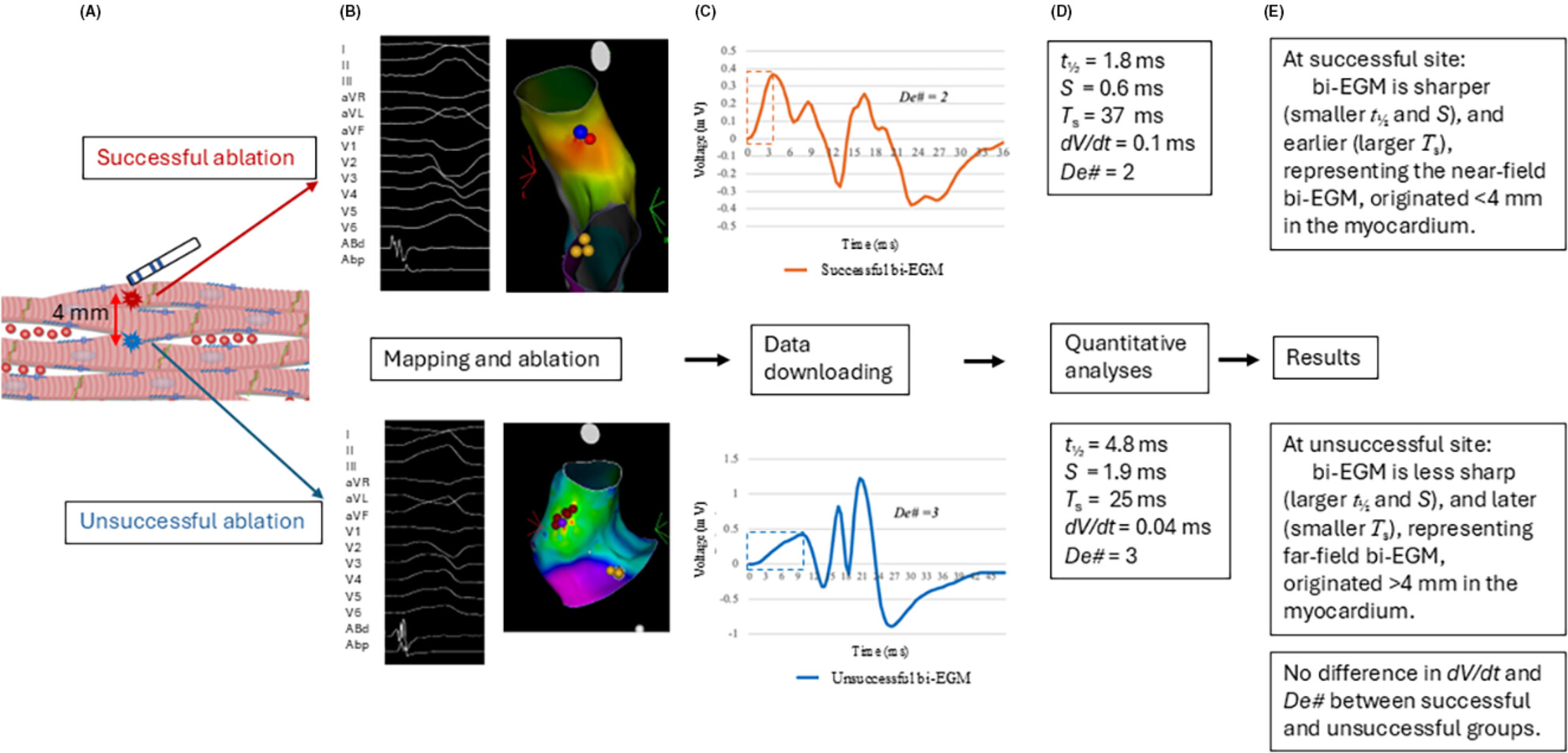
The initial activation phase of distal bi-EGM of focal PVCs was quantitatively analyzed using 5 numerical parameters, t½, S, dV/dt, Ts, and De#. From the left to the right: (a) myocardial model showing estimated successful and unsuccessful ablation site; (b) mapping and ablation; (c) ASCII data download and reconstruction; (d) calculation of 5 parameters; (e) results. Among these, t½, S, and Ts are precise in quantifying the sharpness and earliness of distal bi-EGM, differentiating the near-field from far-field bi-EGM for guiding successful ablation.
LIST OF REVIEWERS
SPOTLIGHT
Catheter ablation of uncommon epicardial accessory pathway sites: A single-center case series
- First Published: 04 June 2025
ORIGINAL ARTICLE
Temporal trends and racial disparities in atrial fibrillation ablation: A 5-year study
- First Published: 03 June 2025
The signal quality of tripolar Laplacian electrogram compared to bipolar electrogram in cardiac electrophysiology
- First Published: 29 May 2025
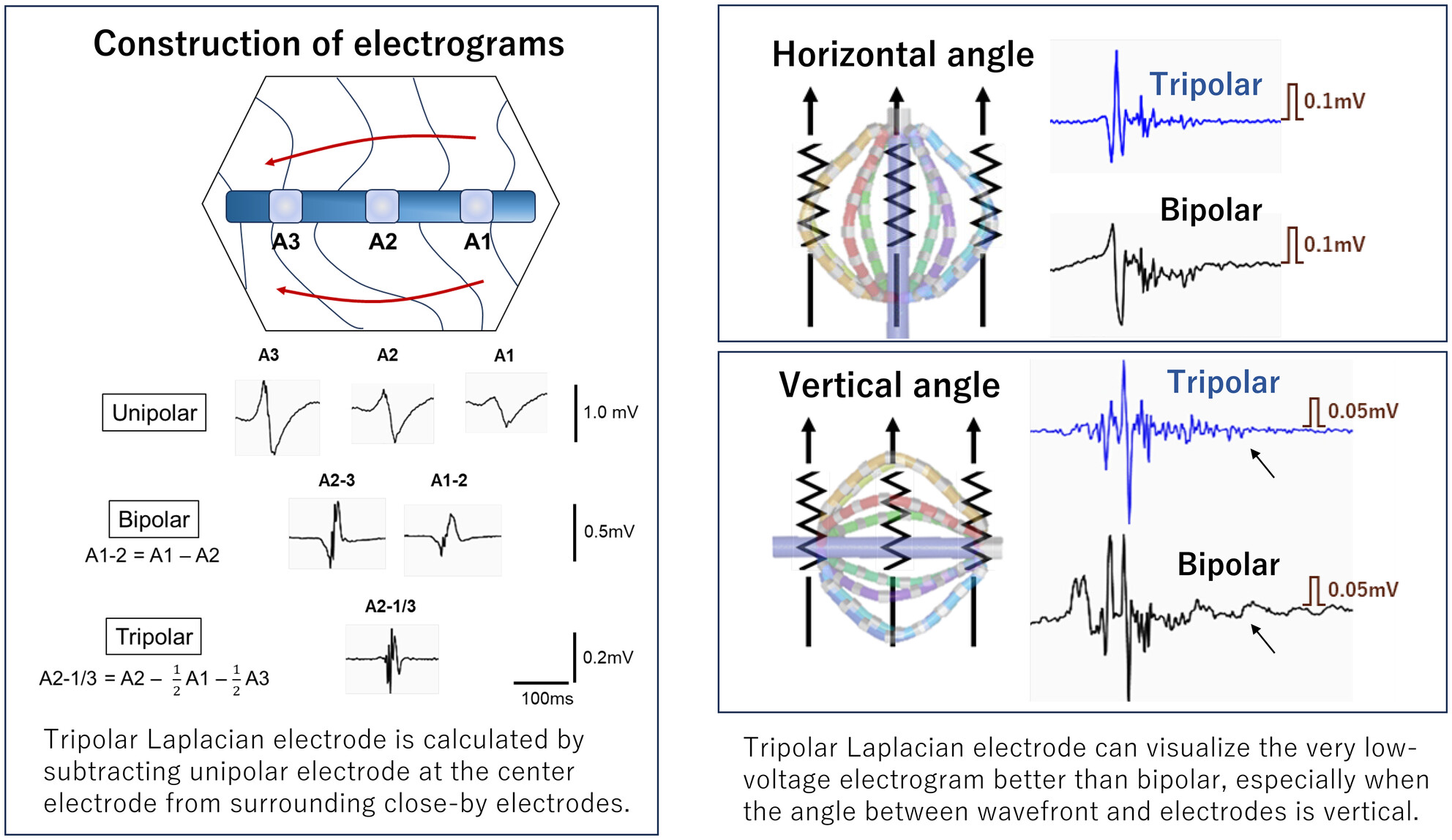
Tripolar Laplacian electrogram (TLE) is one of the multipolar electrograms. TLE has a lower voltage amplitude than bipolar electrograms for all activation patterns and wavefront angles, and it removes more noise and far-field potentials. TLE is useful for analyzing low-voltage and fractionated electrograms regardless of the wavefront angle.
SPOTLIGHT
Opening the door to a new era: A dual-chamber leadless pacemaker
- First Published: 28 May 2025
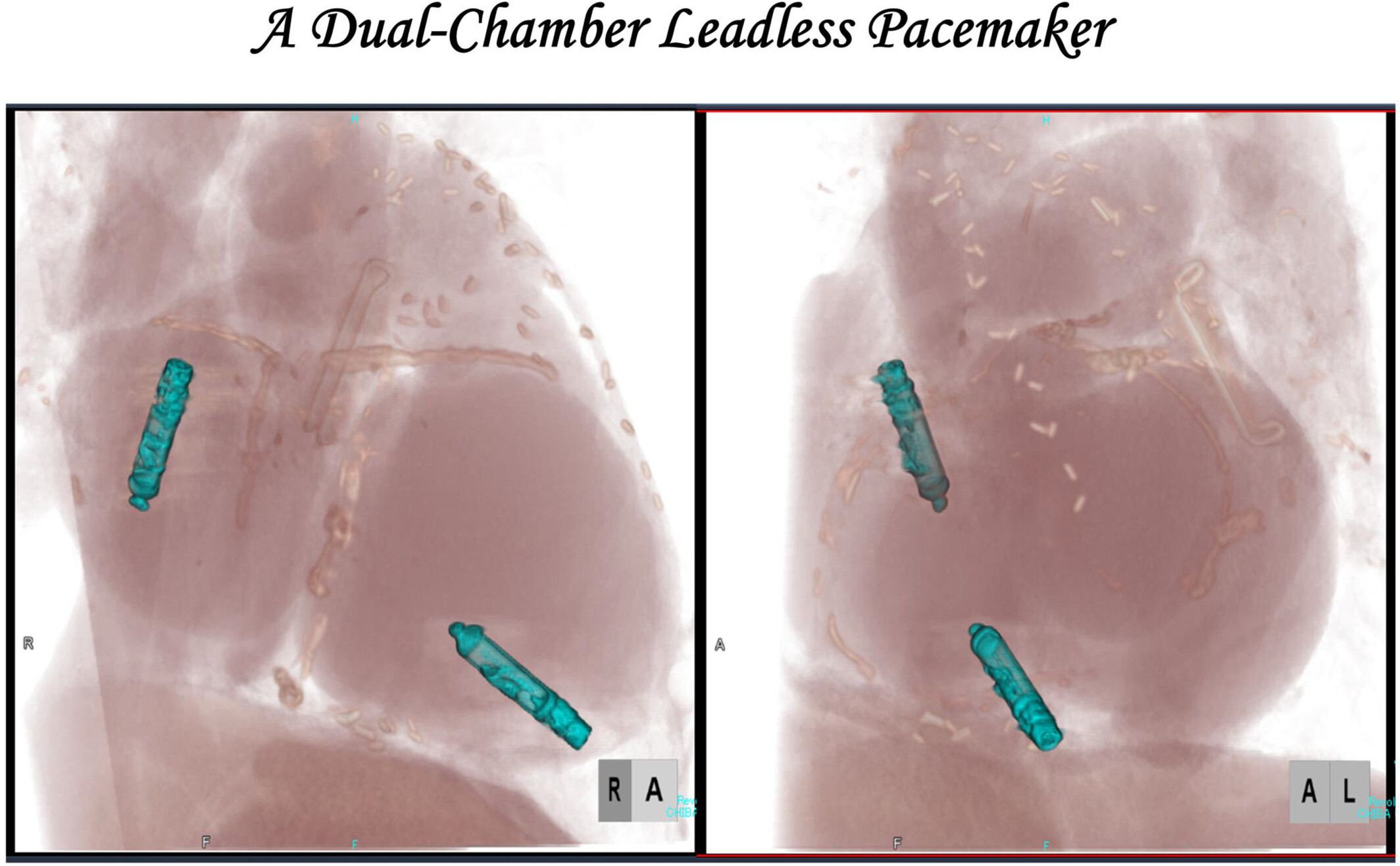
Dual-chamber leadless pacing with Aveir DR offers a breakthrough alternative for patients at high risk of infection or with limited vascular access. By enabling both atrial and ventricular pacing without transvenous leads, this technology improves AV synchrony and may revolutionize future cardiac rhythm management, including defibrillation and resynchronization therapies.
Entrapment of the PulseSelect™ catheter in the pulmonary vein: A rare complication due to soft tissue obstruction
- First Published: 28 May 2025
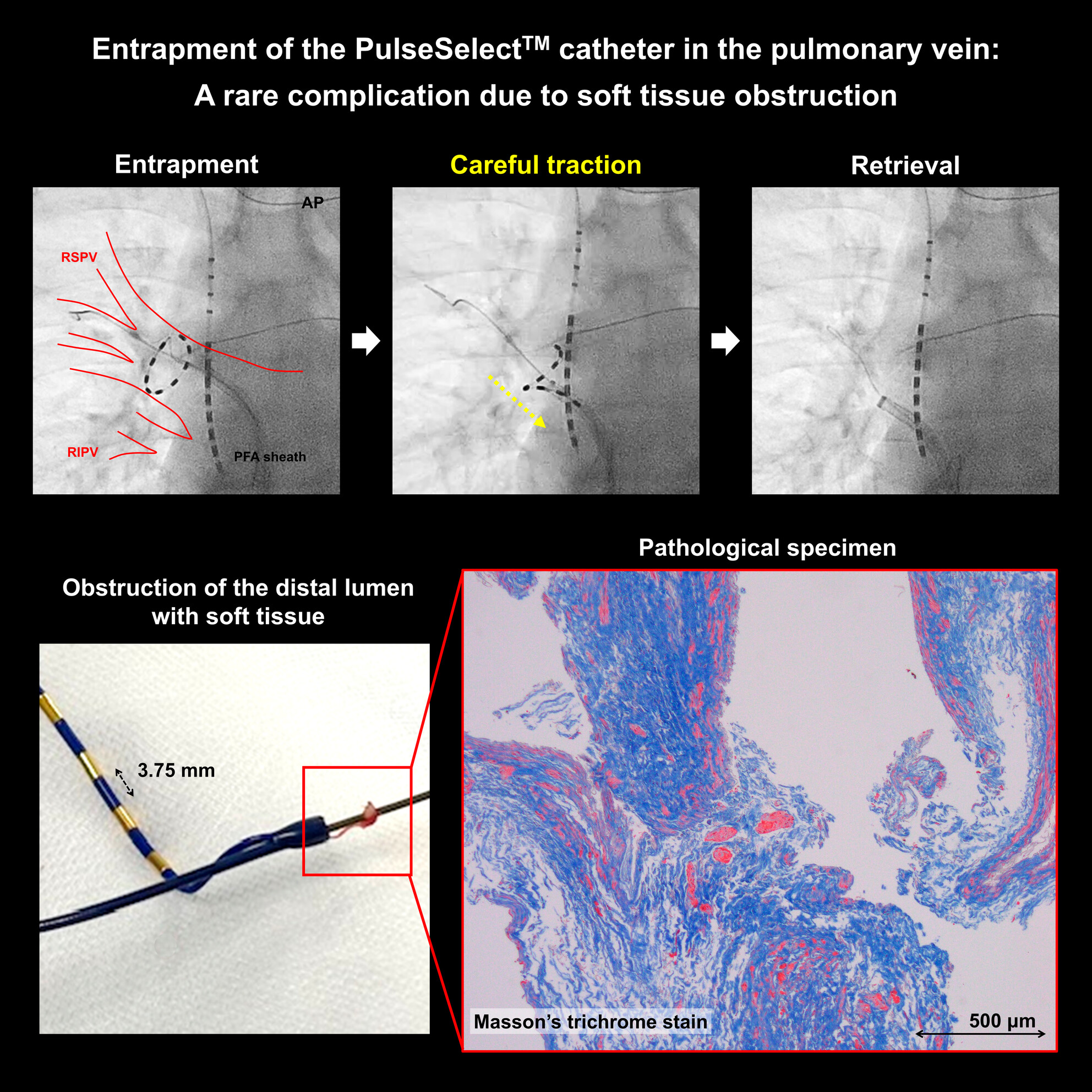
We encountered a case in which a guidewire and PulseSelect™ catheter became entrapped within a pulmonary vein during atrial fibrillation ablation. Although careful manual traction allowed successful retrieval without complications, the maneuver carried a risk of serious adverse events. Operators should be aware of this rare but important complication and avoid excessive catheter advancement into a distal pulmonary vein to minimize the risk of entrapment.
LETTER TO THE EDITOR
GUIDELINES
ORIGINAL ARTICLE
A cross-tissue transcriptome-wide association study identifies novel susceptibility genes for atrial fibrillation
- First Published: 22 May 2025
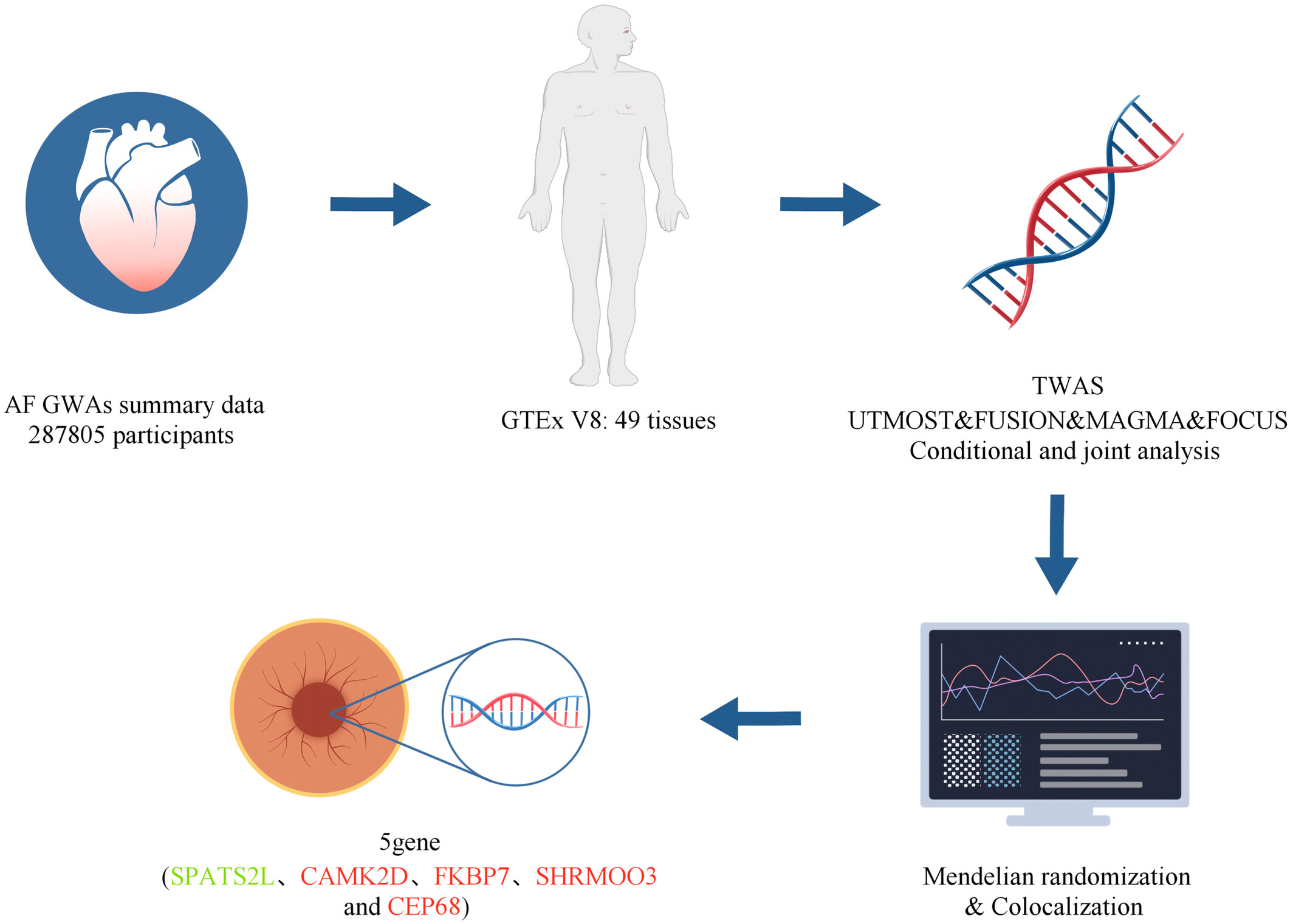
This cross-tissue transcriptome-wide association study identified five novel AF susceptibility genes (CAMK2D, SPAST2L, CEP68, FKBP7, and SHRMOO3). Elevated expression of FKBP7, CEP68, and CAMK2D increases AF risk, while SPATS2L shows a protective effect, with colocalization analysis implicating CEP68 and SPATS2L as prioritized candidates. This study highlights SPATS2L and CEP68 as potential functional candidate genes in AF pathogenesis.
Trends in atrial fibrillation and flutter mortality associated with disorders of thyroid gland in the United States from 1999 to 2020
- First Published: 22 May 2025
Accuracy and interpretability of smartwatch electrocardiogram for early detection of atrial fibrillation: A systematic review and meta-analysis
- First Published: 22 May 2025
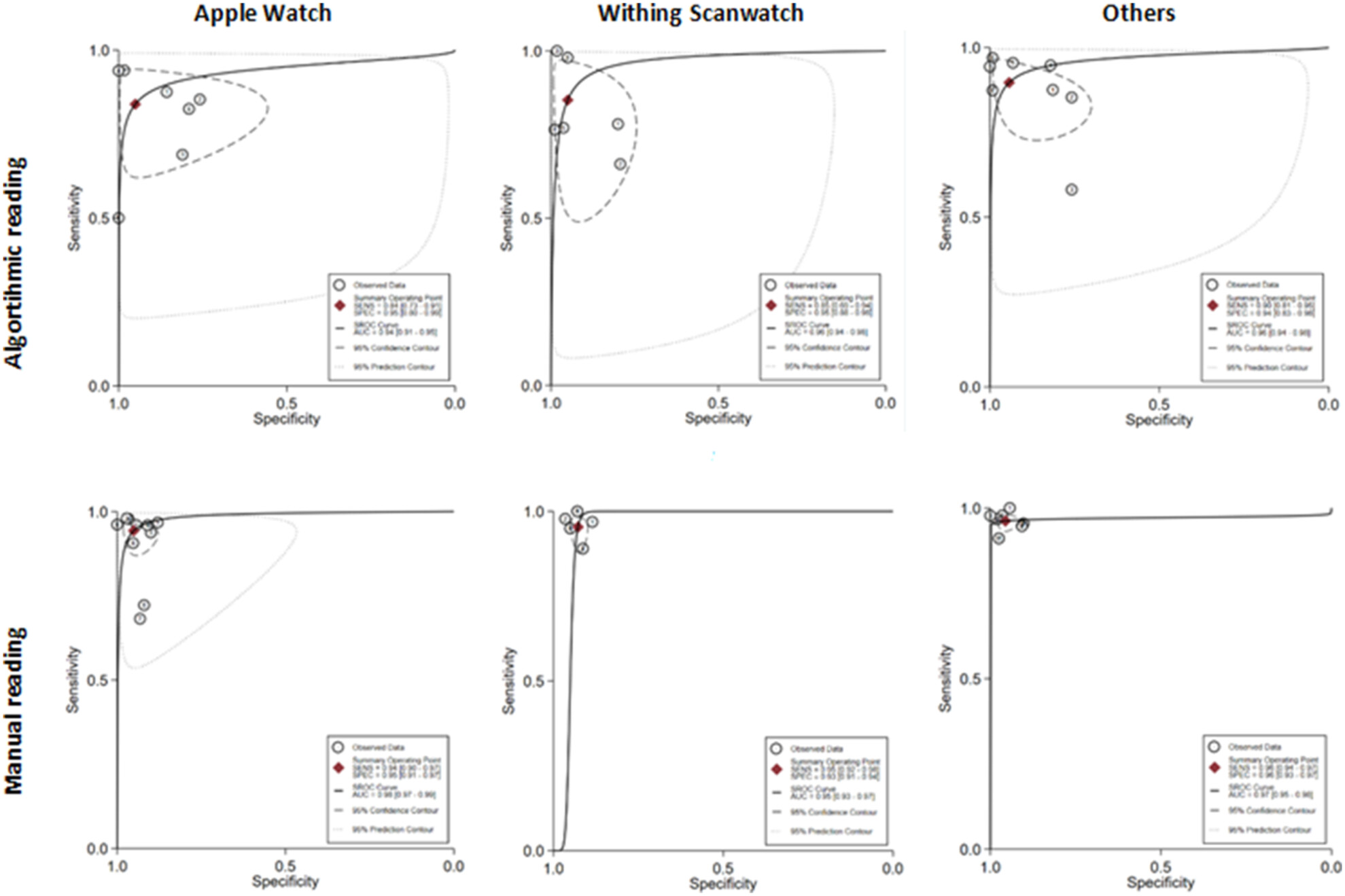
The smartwatch ECG algorithm achieved 86% sensitivity and 94% specificity with an sAUC of 96%, while manual readings by trained personnel reached 96% sensitivity, 95% specificity, and an sAUC of 98% in a brand-specific subgroup analysis. These findings demonstrate that the smartwatch ECG detects AFib, although 3% of results are unreadable.
Chronic kidney disease and increased LAVI as risk factors of new-onset heart failure in atrial fibrillation: A case-control study
- First Published: 20 May 2025
Prognostic comparison between implantable cardioverter-defibrillator and amiodarone in cancer patients
- First Published: 19 May 2025
Efficacy and safety of non-vitamin K antagonist oral anticoagulants versus warfarin in atrial fibrillation and kidney failure under hemodialysis: A meta-analysis of controlled randomized trials
- First Published: 19 May 2025
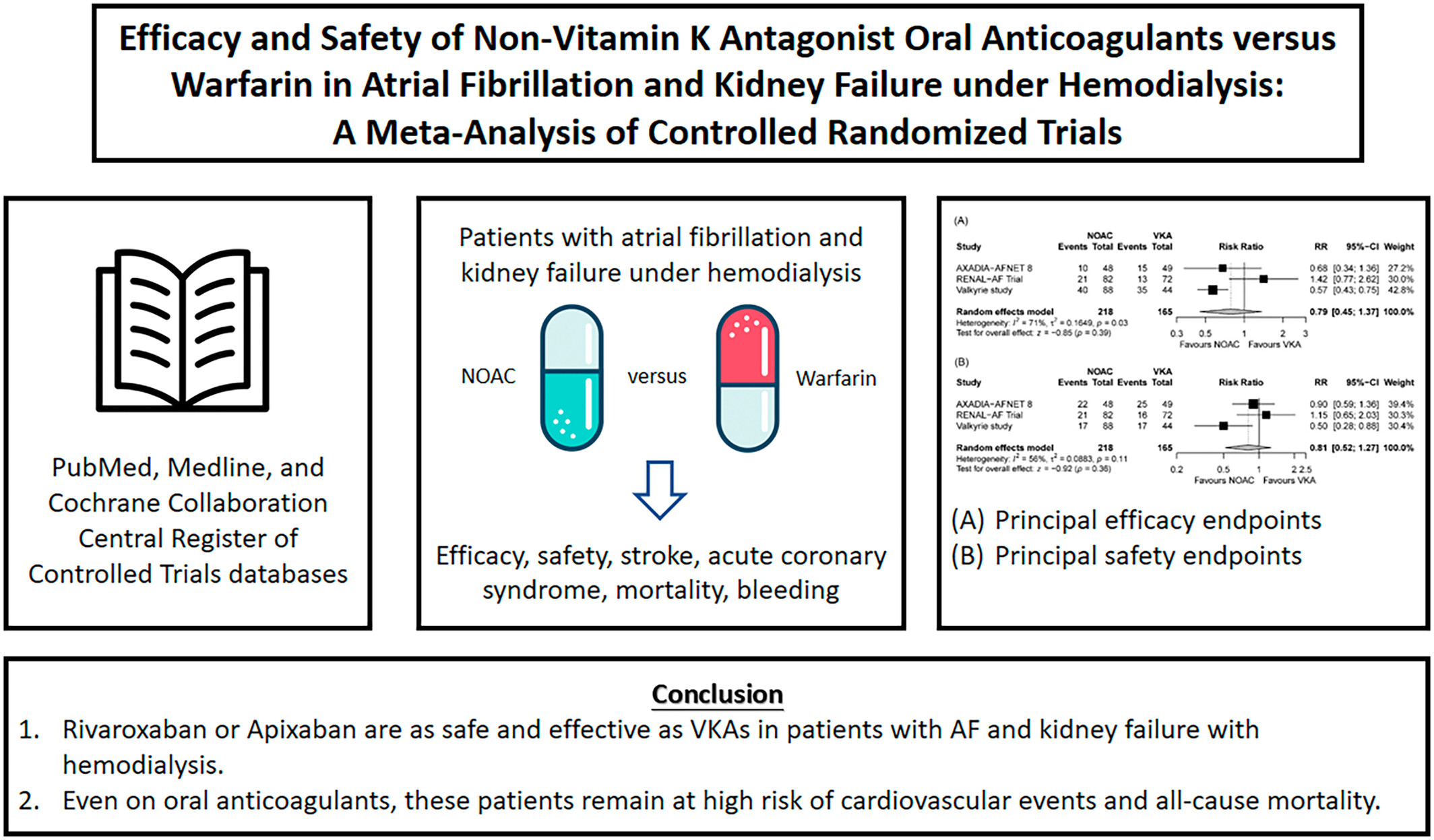
Rivaroxaban or apixaban is as safe and effective as VKAs in patients with AF and kidney failure with hemodialysis. Even on oral anticoagulants, these patients remain at high risk of cardiovascular events and all-cause mortality. Integrated care and holistic management are important for this high-risk population.
Clinical and electrophysiological significance of residual unipolar voltage after performing pulmonary vein isolation in patients with paroxysmal atrial fibrillation
- First Published: 19 May 2025
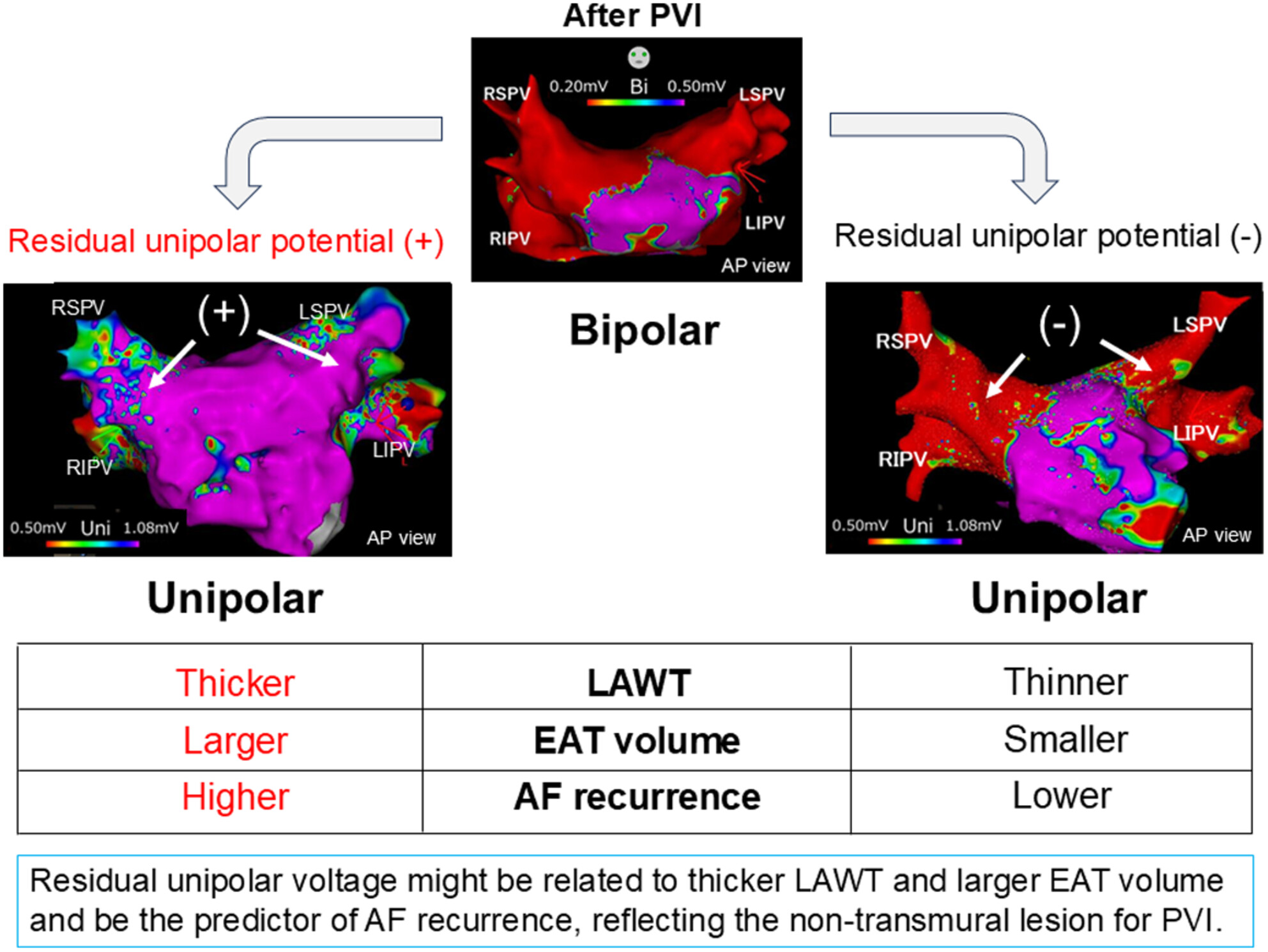
Residual unipolar voltage at the site of pulmonary vein–left atrium conjunction after pulmonary vein isolation may be related to thicker left atrial wall thickness and larger epicardial adipose tissue volume and be the predictor of atrial fibrillation recurrence, suggesting the non-transmural blockline between pulmonary vein and left atrium.
SPOTLIGHT
Successful accessory pathway ablation in infant with supraventricular tachycardia associated with necrotizing enterocolitis; spotlight
- First Published: 19 May 2025
Transient conduction block of the superior vena cava following pulsed field ablation of the right superior pulmonary vein
- First Published: 15 May 2025
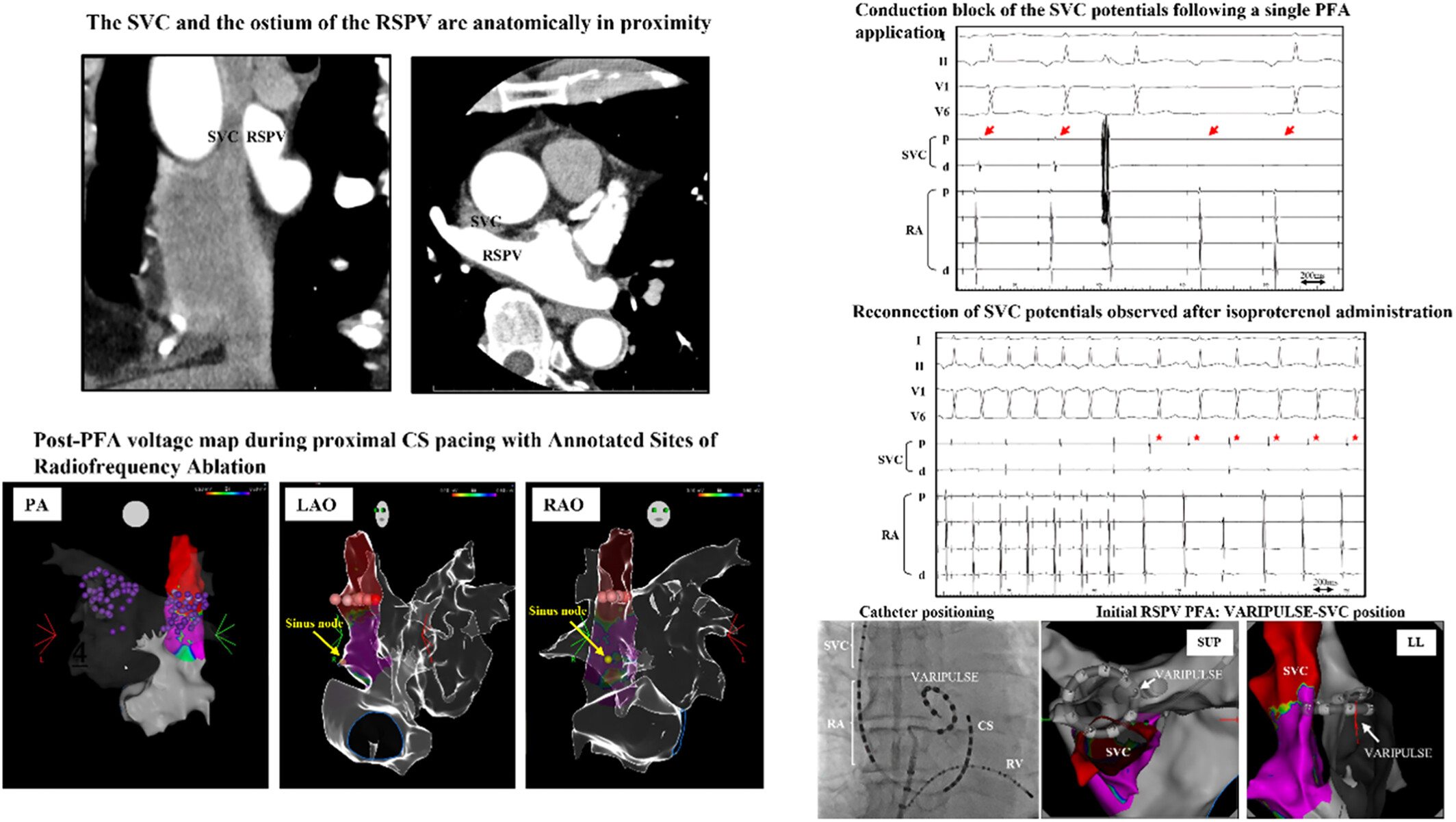
This case demonstrates that an immediate superior vena cava (SVC) conduction block may occur during pulsed field ablation (PFA) due to anatomical proximity, a positive tissue proximity index, and a narrow SVC diameter. However, lesions not directly influenced by PFA tend to regress and may be reversible, leading to SVC potential reconduction. CS, coronary sinus; d, distal; LAO, left oblique view; LL, left lateral; p, proximal; PA, posteroanterior view; RA, right atrial; RAO, right oblique view; RSPV, right superior pulmonary vein; RV, right ventricular; SUP, superior view.
ORIGINAL ARTICLE
Survival benefit of primary prevention implantable cardioverter-defibrillator/cardiac resynchronization therapy with a defibrillator: Analysis of the Japan cardiac device treatment registry and Japanese cardiac registry of heart failure in cardiology
- First Published: 12 May 2025

Among propensity-matched cohorts eligible for SCD-HeFT, primary prevention ICD/CRT-D reduced the risk of all-cause mortality with an adjusted hazard ratio of 0.616 (p = 0.026). The cumulative incidence of first appropriate therapy in the defibrillator therapy group was nearly identical to that of all-cause death in the conventional therapy group.
Acute effect of multipoint pacing and fused AV delay in patients receiving cardiac resynchronization therapy
- First Published: 12 May 2025
SPOTLIGHT
Stepwise MRI mode activation in a patient with a non-MRI-conditional VDD lead
- First Published: 12 May 2025
LETTER TO THE EDITOR
Electrocardiographic parameter profiles for differentiating hypertrophic cardiomyopathy stages
- First Published: 12 May 2025
ORIGINAL ARTICLE
The HFA-PEFF score and outcomes in patients with sick sinus syndrome and preserved ejection fraction after pacemaker implantation
- First Published: 12 May 2025
Long-term of epicardial radiofrequency ablation and benefit for recurrent ventricular arrhythmia in Brugada syndrome: A systematic review and meta-analysis
- First Published: 08 May 2025
The “16-gram window” of contact-force: A new criterion for very high-power short-duration ablation
- First Published: 06 May 2025
Clinical insights into the role of bepridil in recurrence prevention after ablation of persistent atrial fibrillation
- First Published: 05 May 2025
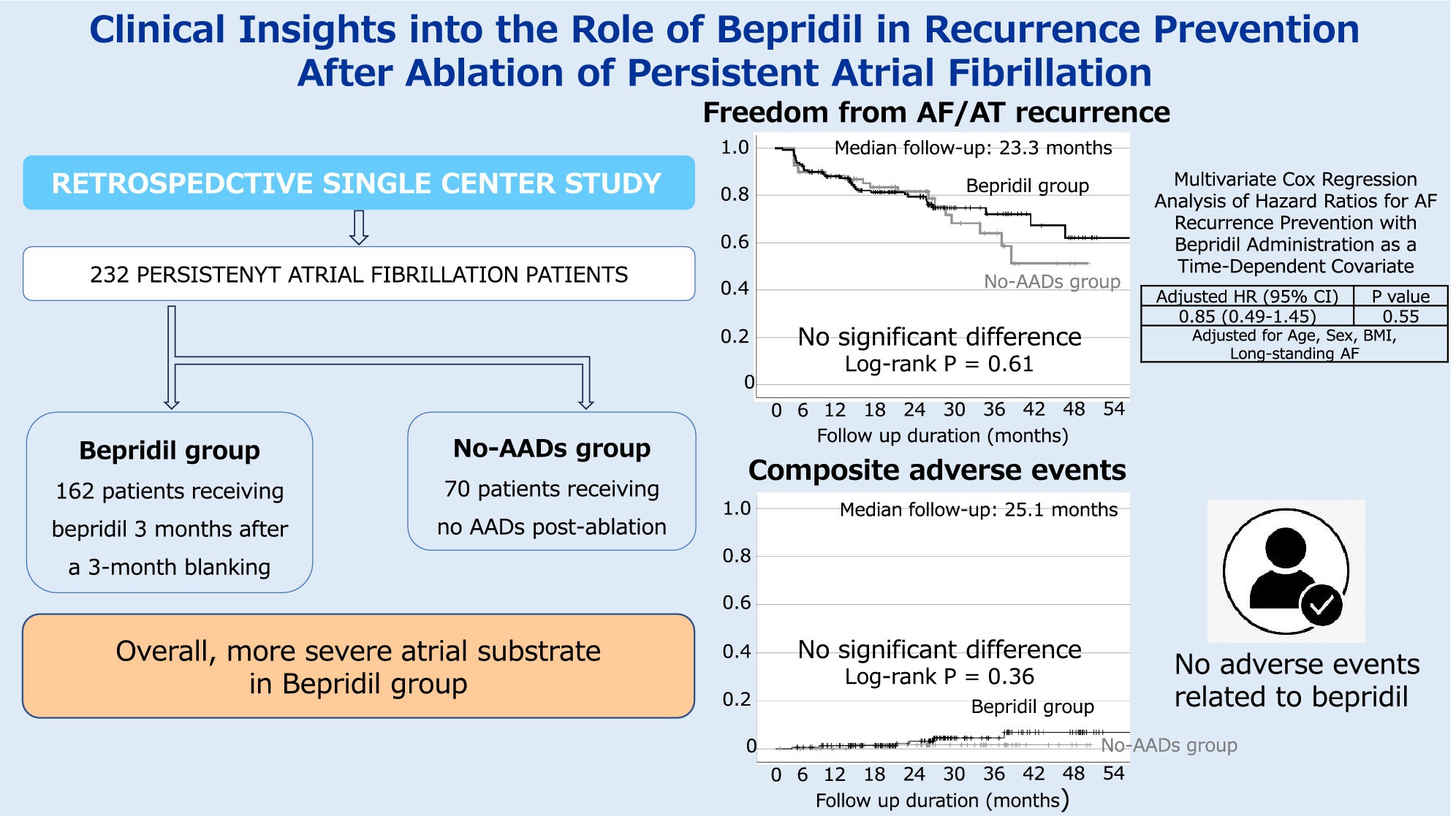
This retrospective study included 232 consecutive persistent atrial fibrillation patients according to the inclusion criteria. Despite patients characteristics with more severe atrial substrates in the Bepridil group, Kaplan–Meier curves showed no significant difference in the AF/AT freedom rate and clinical adverse events between the Bepridil and No-AADs groups. This finding remained consistent after adjusting for baseline characteristics and considering bepridil as a time-dependent covariable. No adverse events related to bepridil were observed during the study.
LETTER TO THE EDITOR
Author's reply to the letter entitled “Critique of omnipolar mapping claims in superior vena cava isolation: A call for standardization”
- First Published: 30 April 2025
ORIGINAL ARTICLE
Characteristics of atrioventricular block during slow pathway ablation for atrioventricular nodal re-entrant tachycardia: A comparative study of cryoablation and radiofrequency ablation
- First Published: 30 April 2025
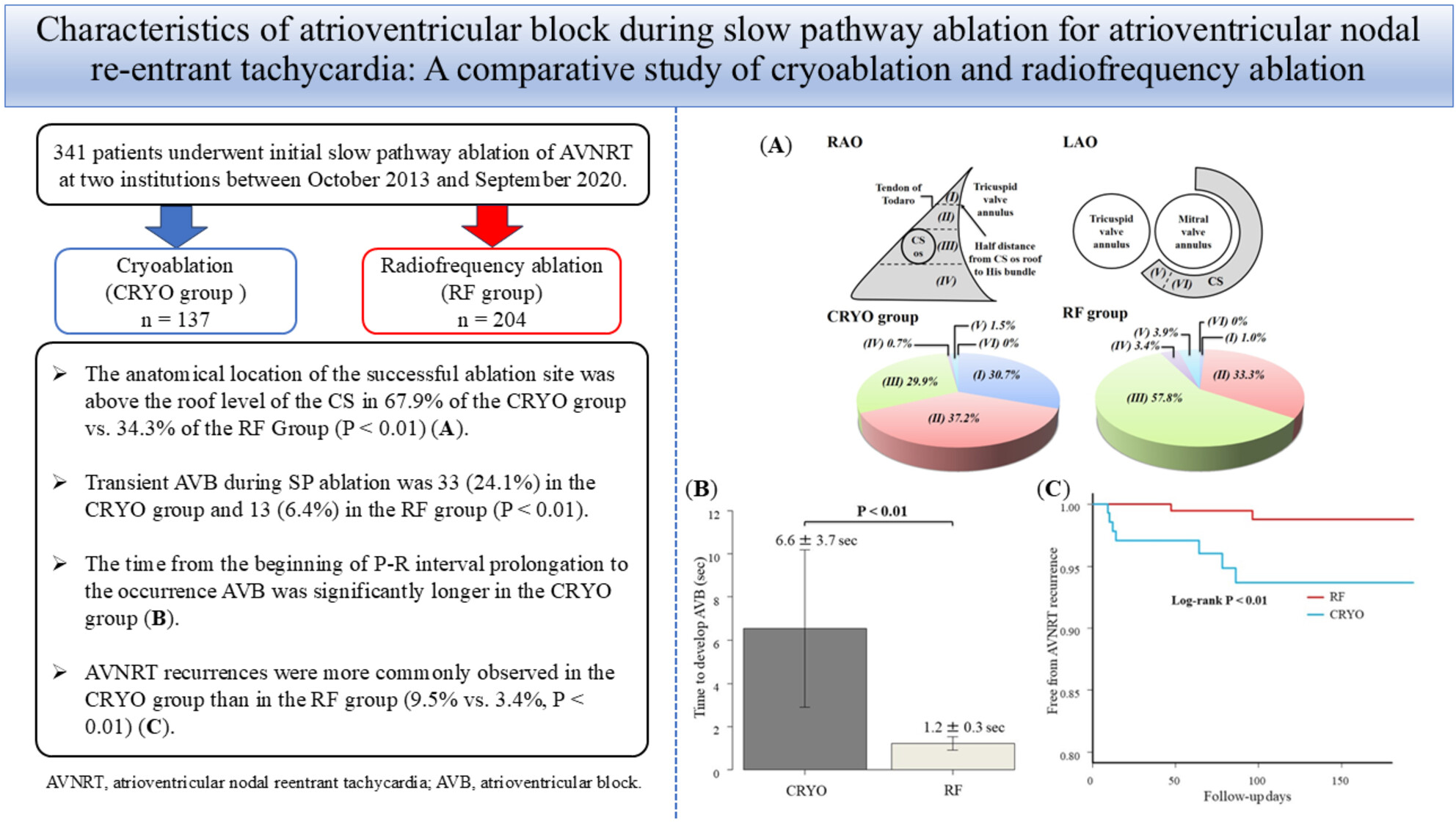
This study aimed to investigate the differences in the appearance of atrioventricular block (AVB) between cryoablation and radiofrequency (RF) ablation for atrioventricular nodal re-entrant tachycardia (AVNRT). Our findings revealed that cryoablation for AVNRT has a higher incidence of transient AVB than RF ablation. Cryoablation gradually causes atrioventricular conduction disturbances when AVB occurs inadvertently, which takes longer than RF ablation.
SPOTLIGHT
Lower loop re-entrant flutter
- First Published: 30 April 2025
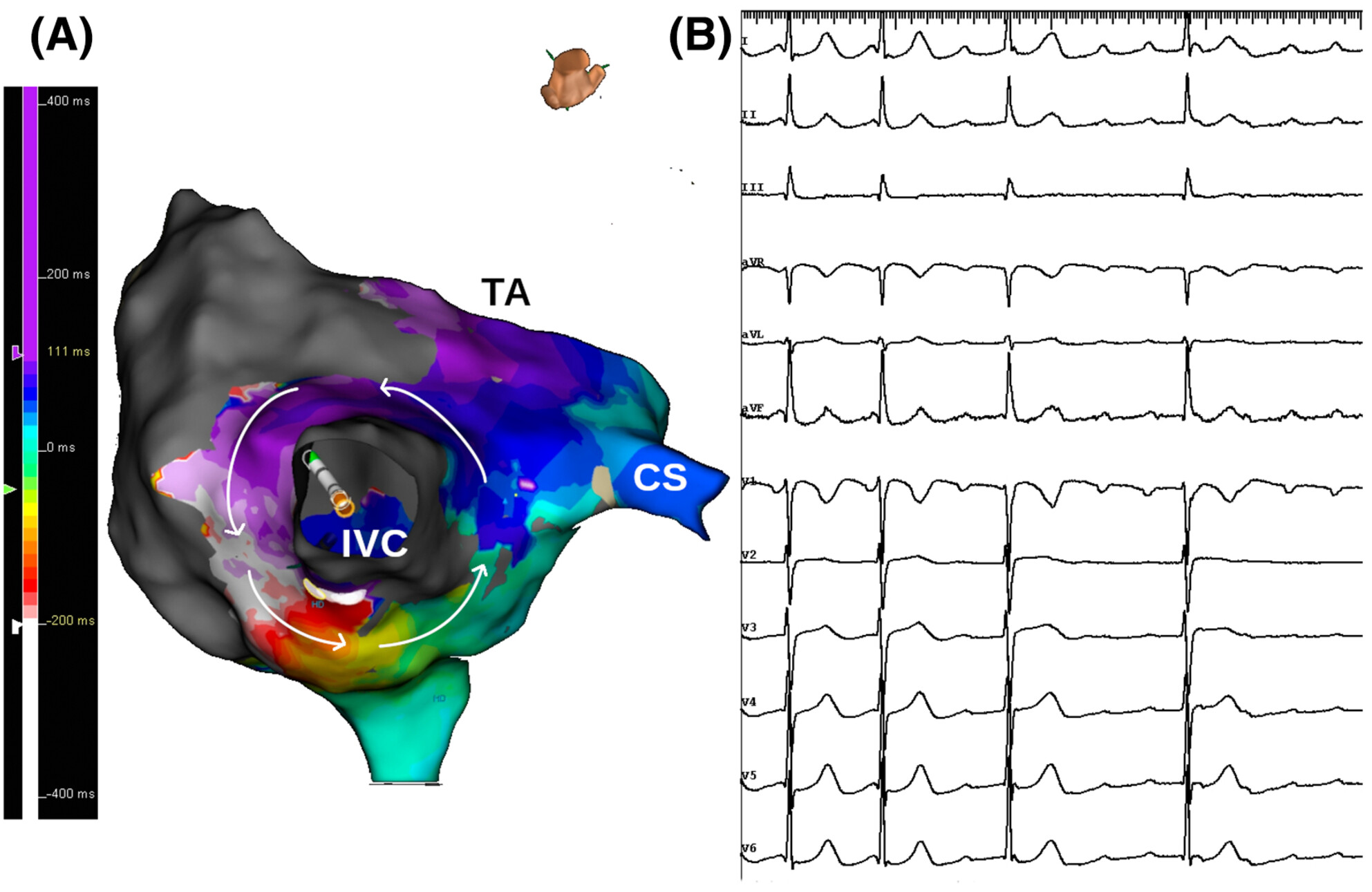
An elderly man with a history of a prior inferior wall myocardial infarction underwent ablation for an atypical right atrial flutter. Electroanatomic mapping revealed diffuse scarring on the anterior, anterolateral, and posterior right atrium, presumably due to atrial infarction from the prior inferior wall myocardial infarction, forcing the activation wavefront through an area of slow conduction across the lower end of the crista terminalis, leading to lower loop reentry in a counterclockwise fashion around the inferior vena cava and a 12-lead ECG showing positive flutter waves in the inferior leads reflecting septal activation in a cranio-caudal direction.




